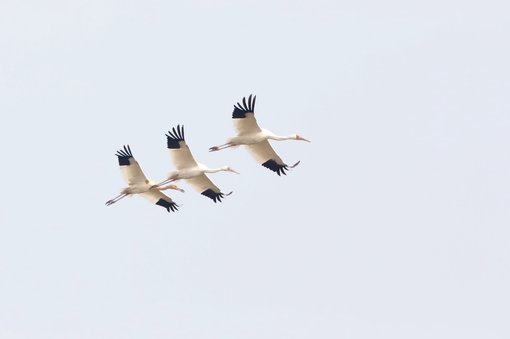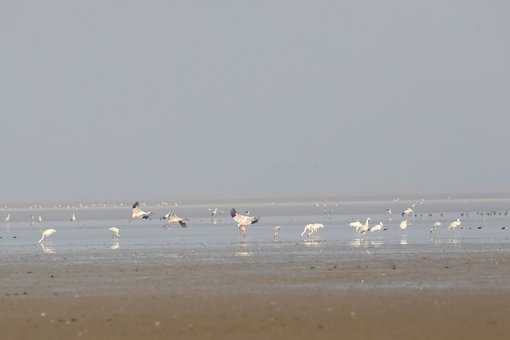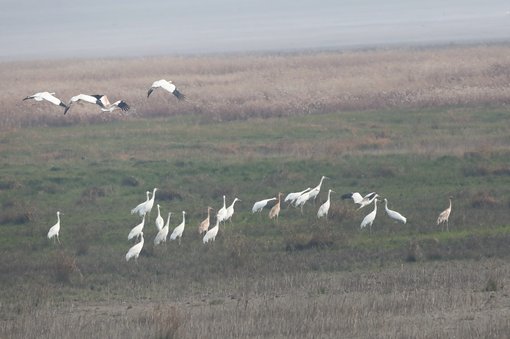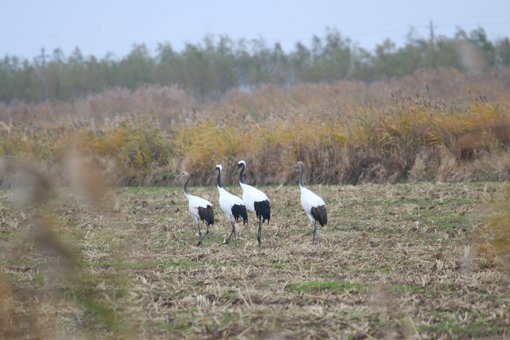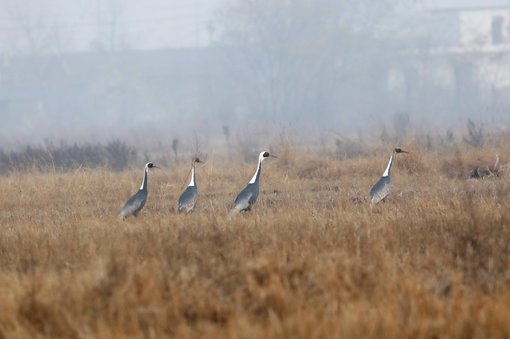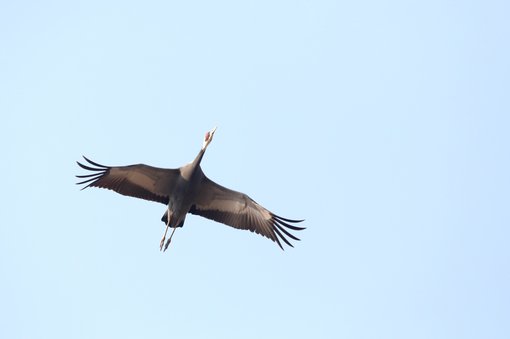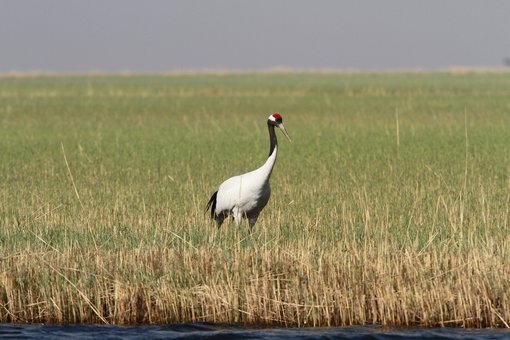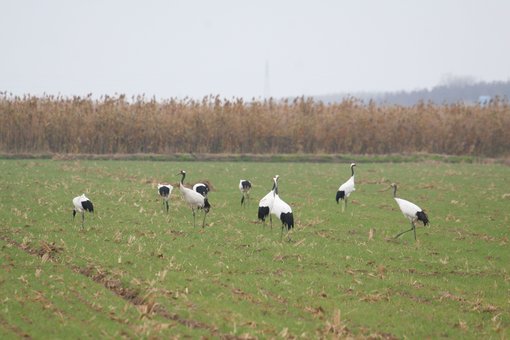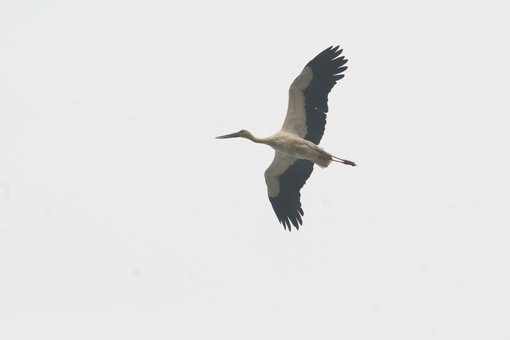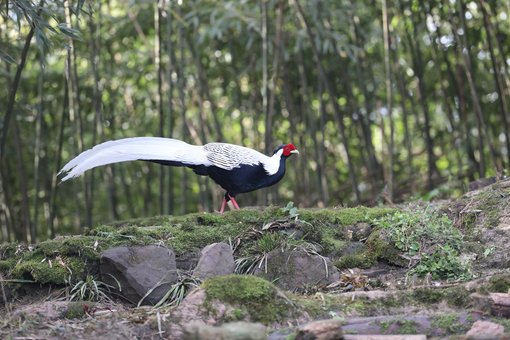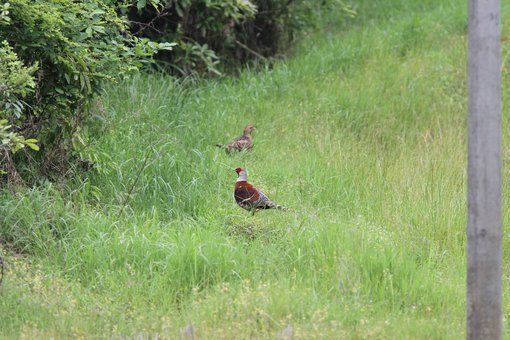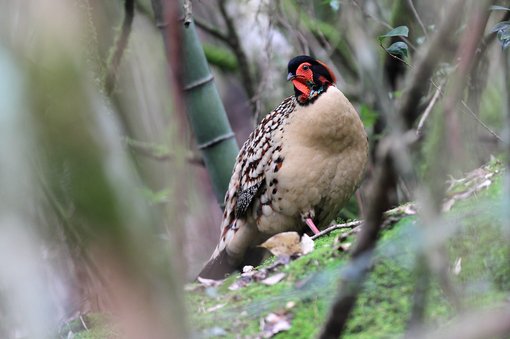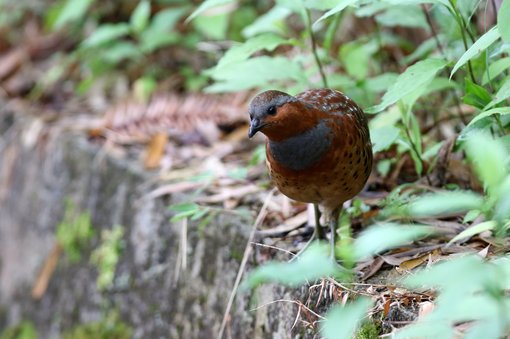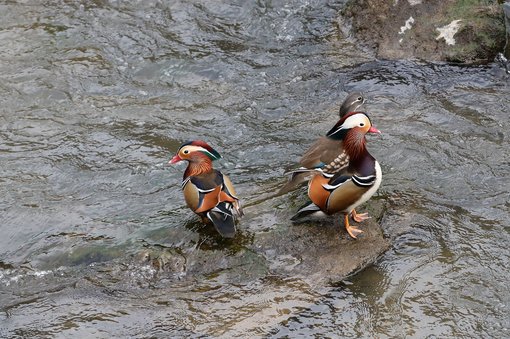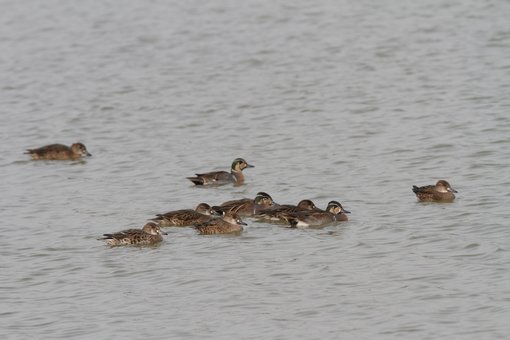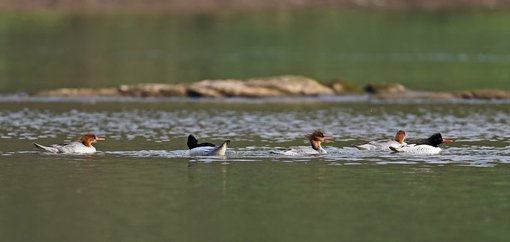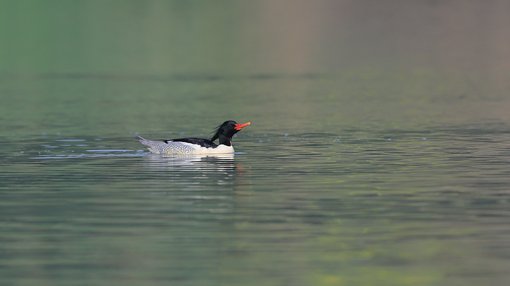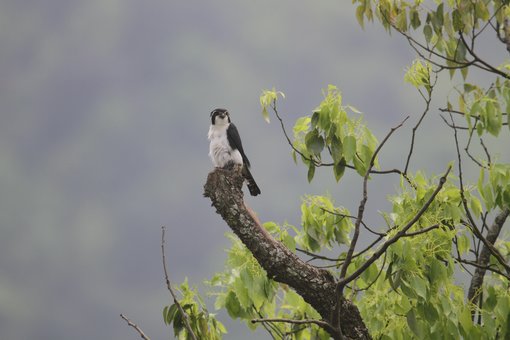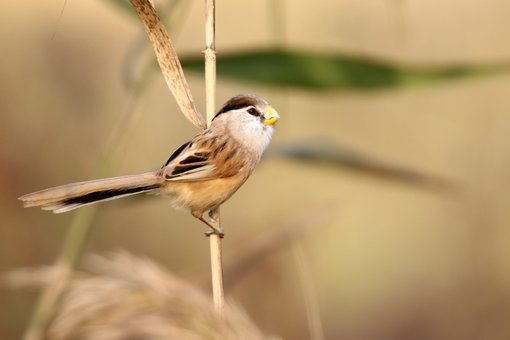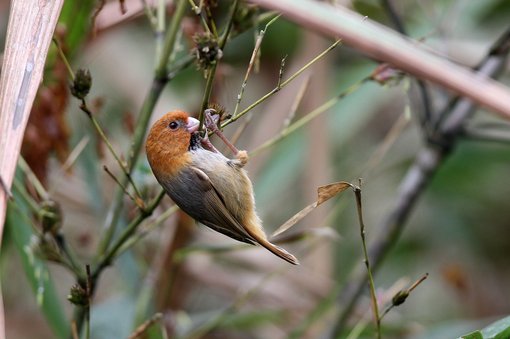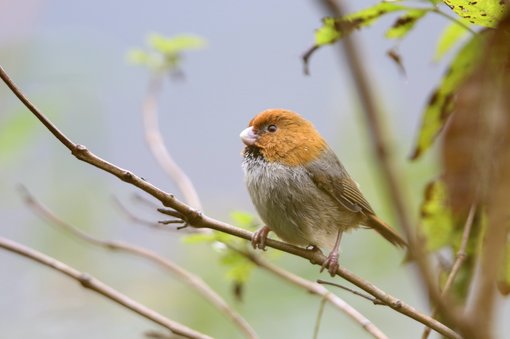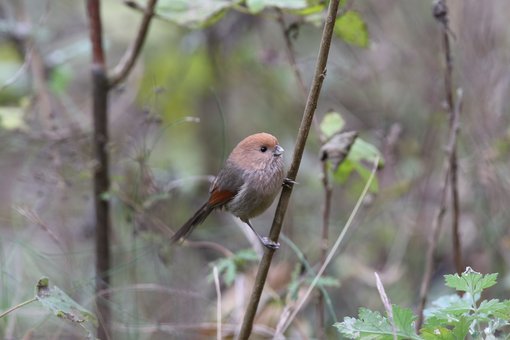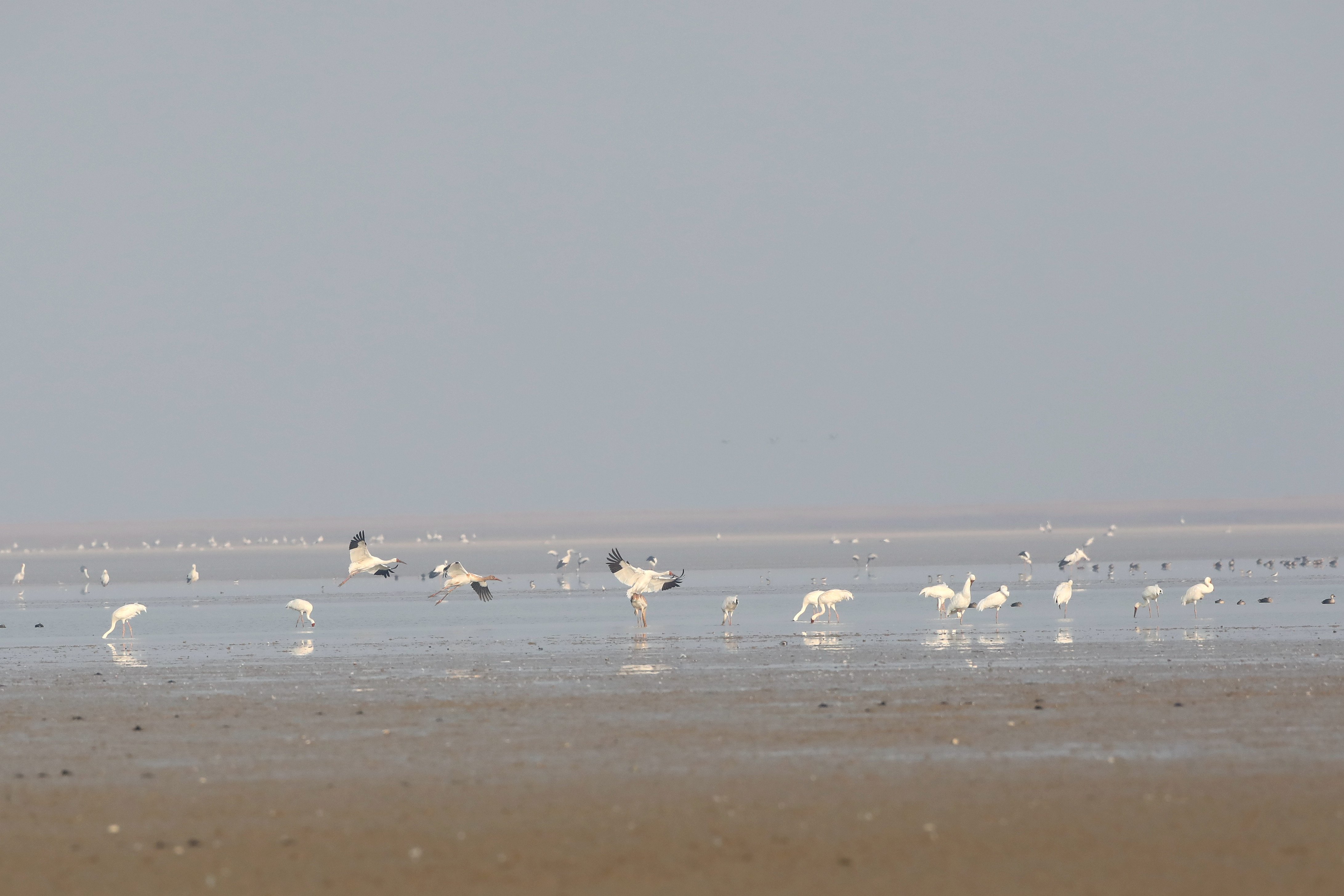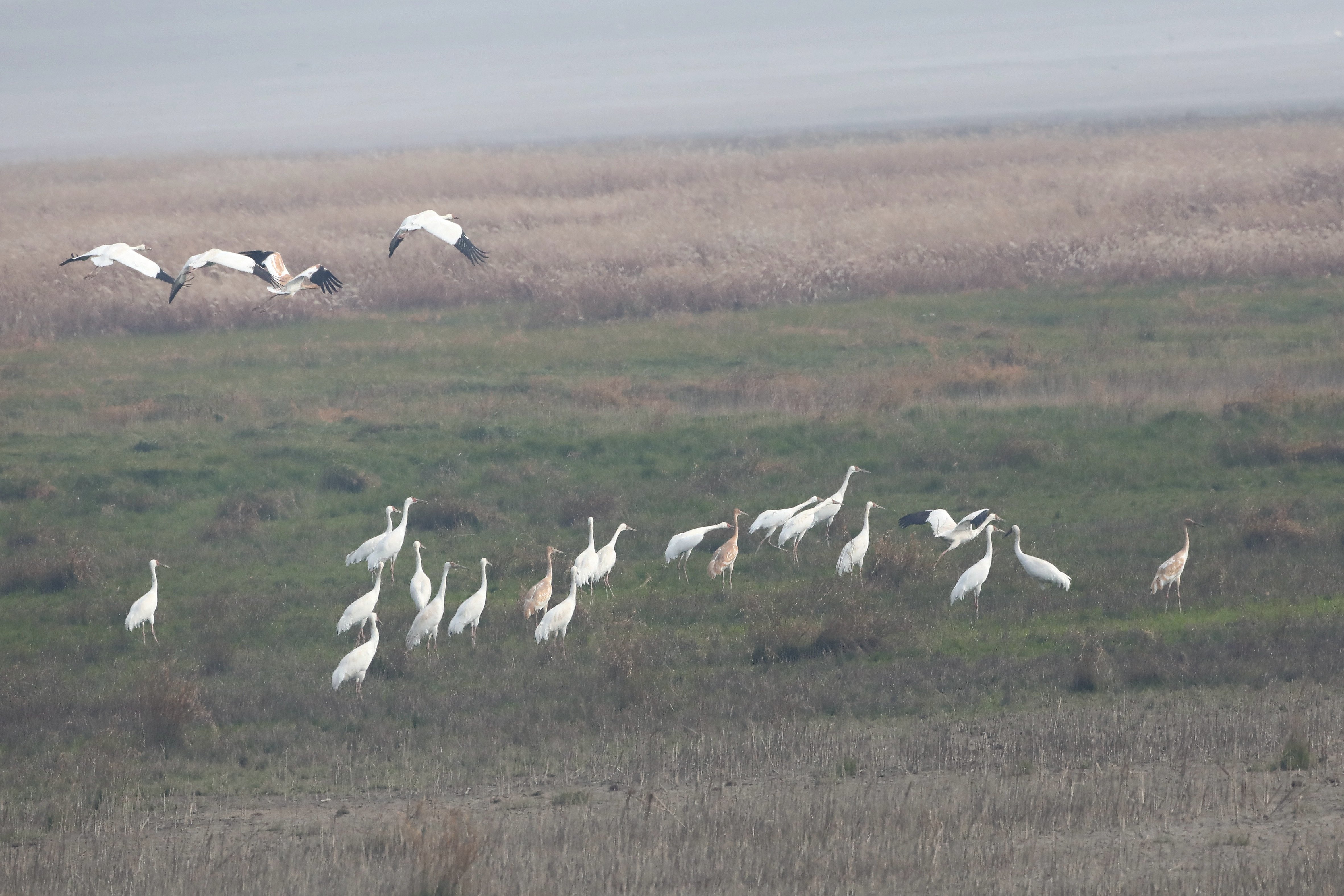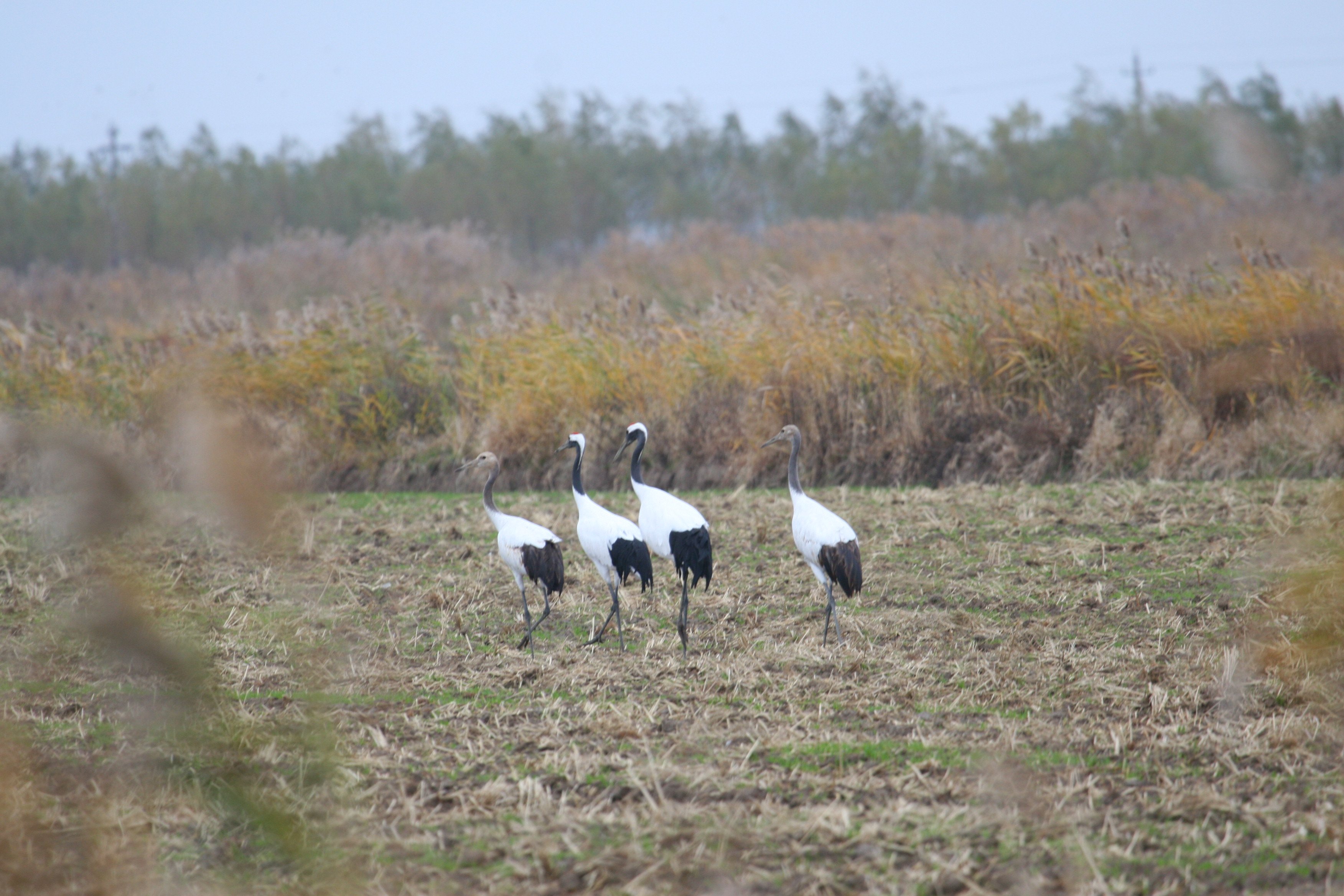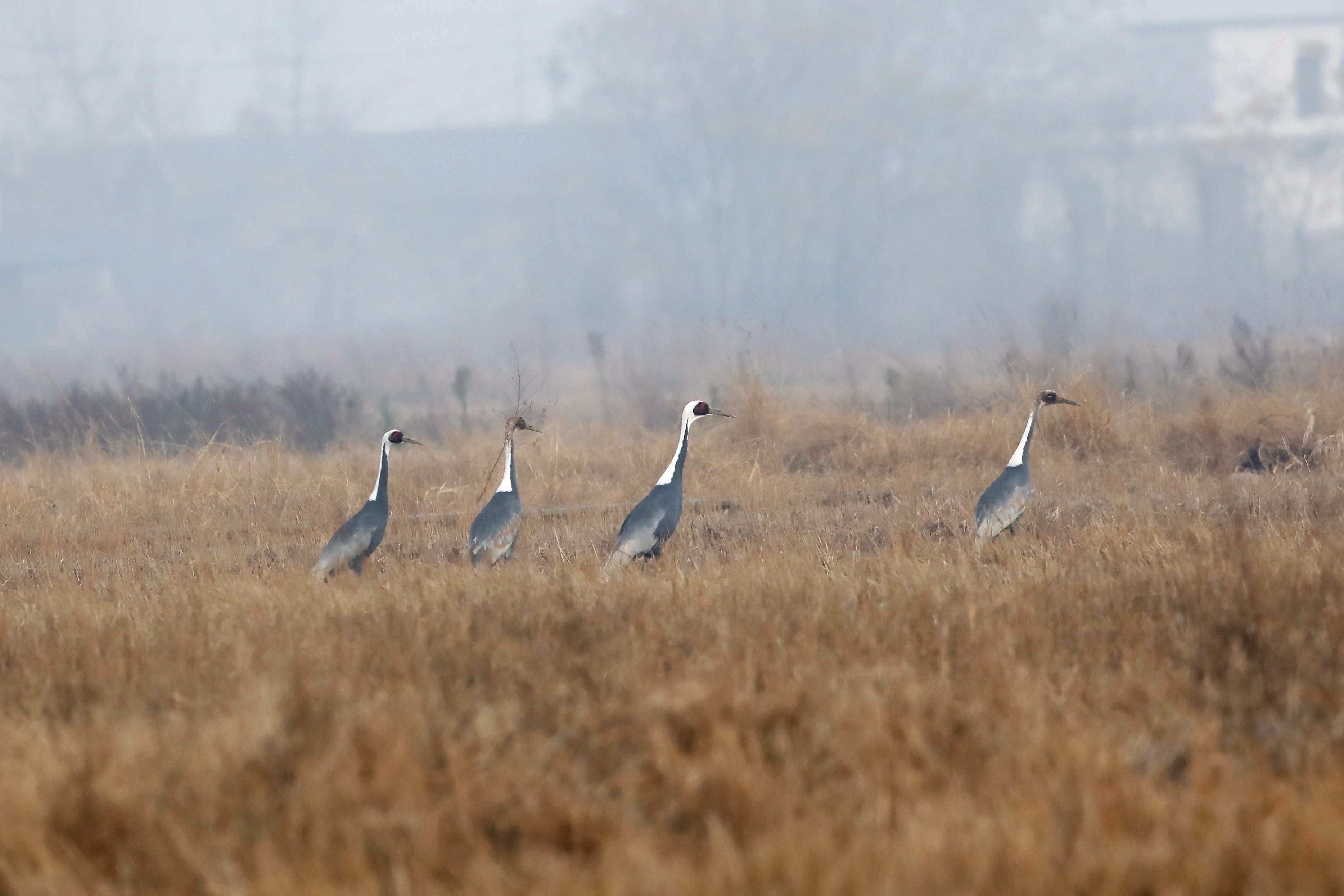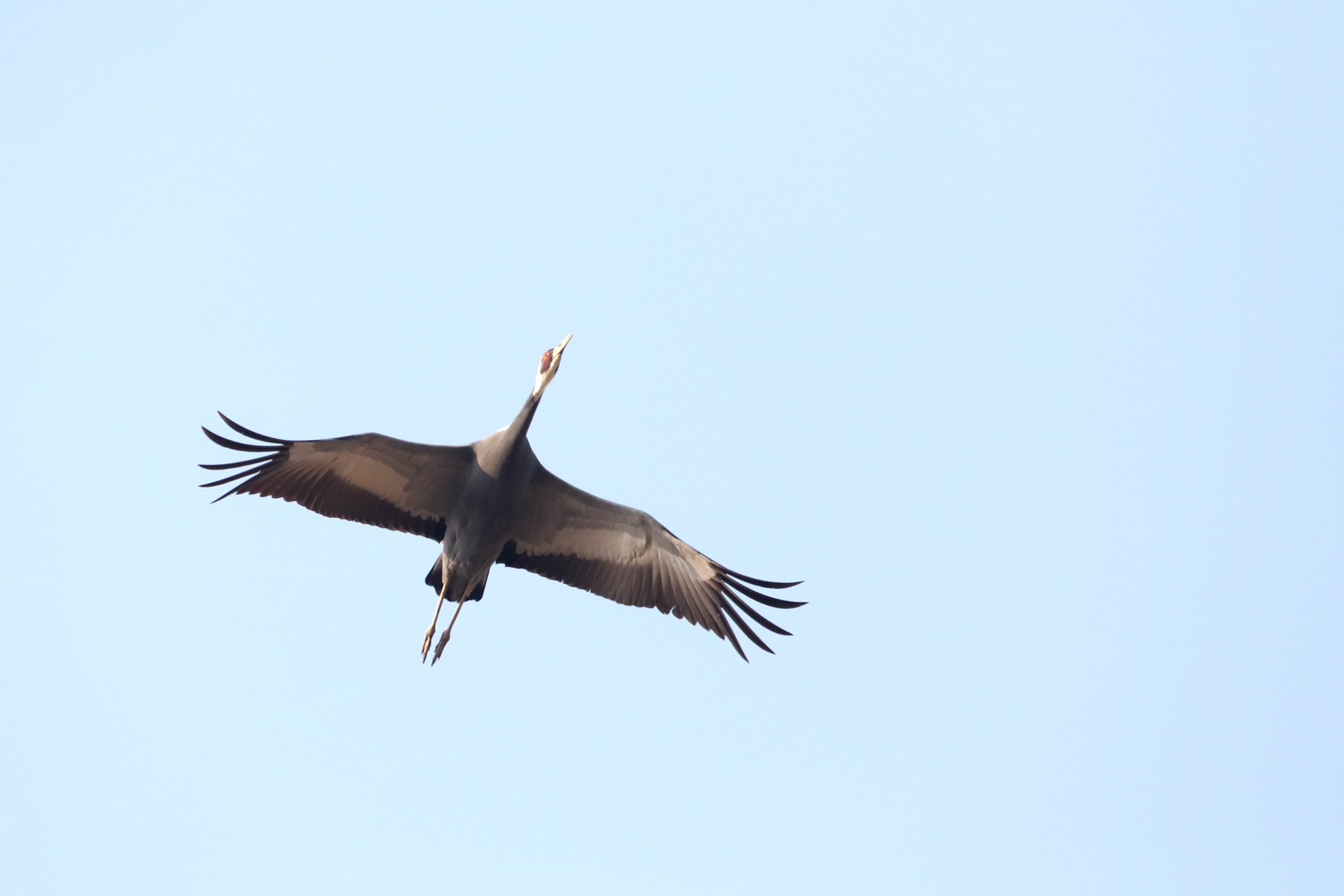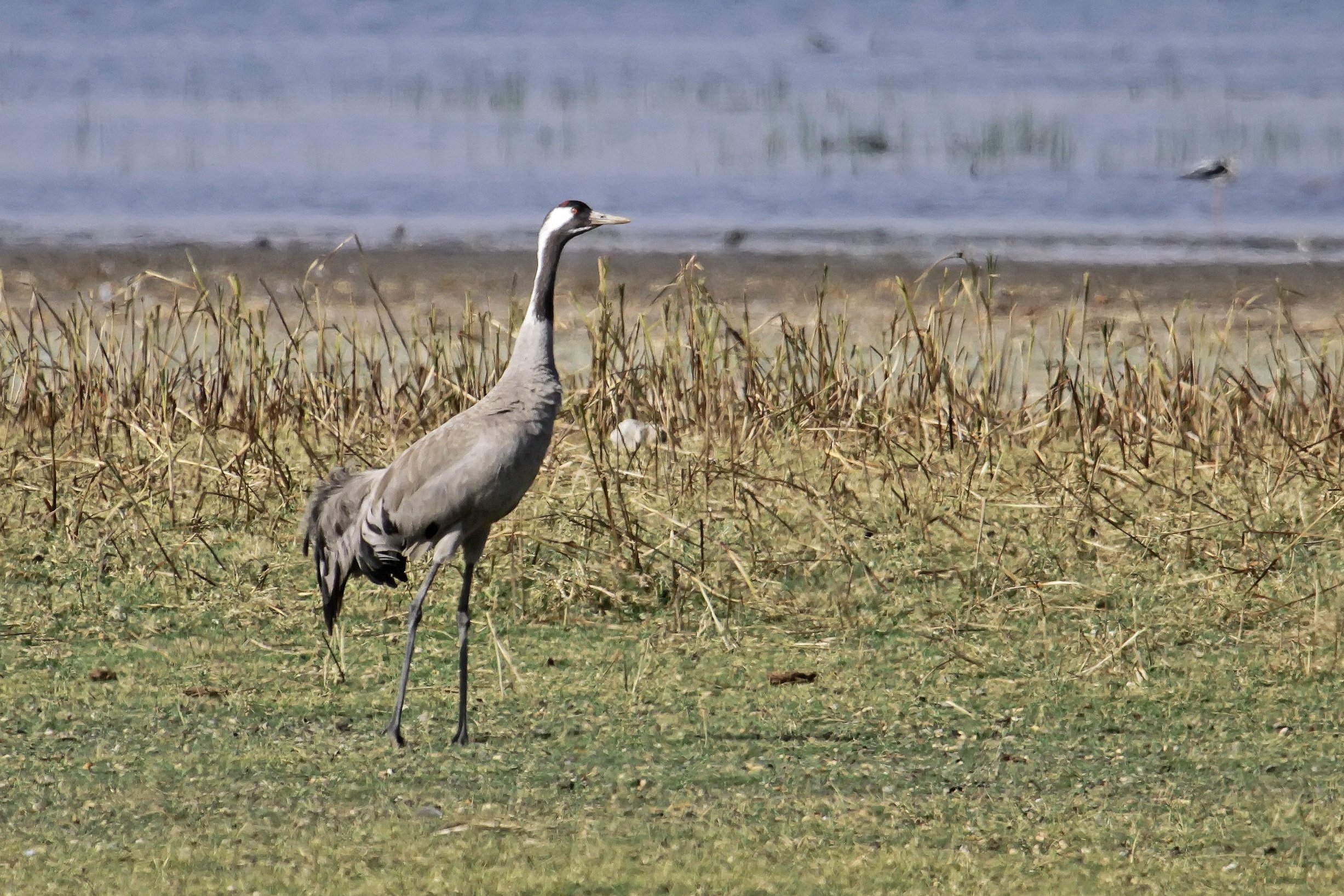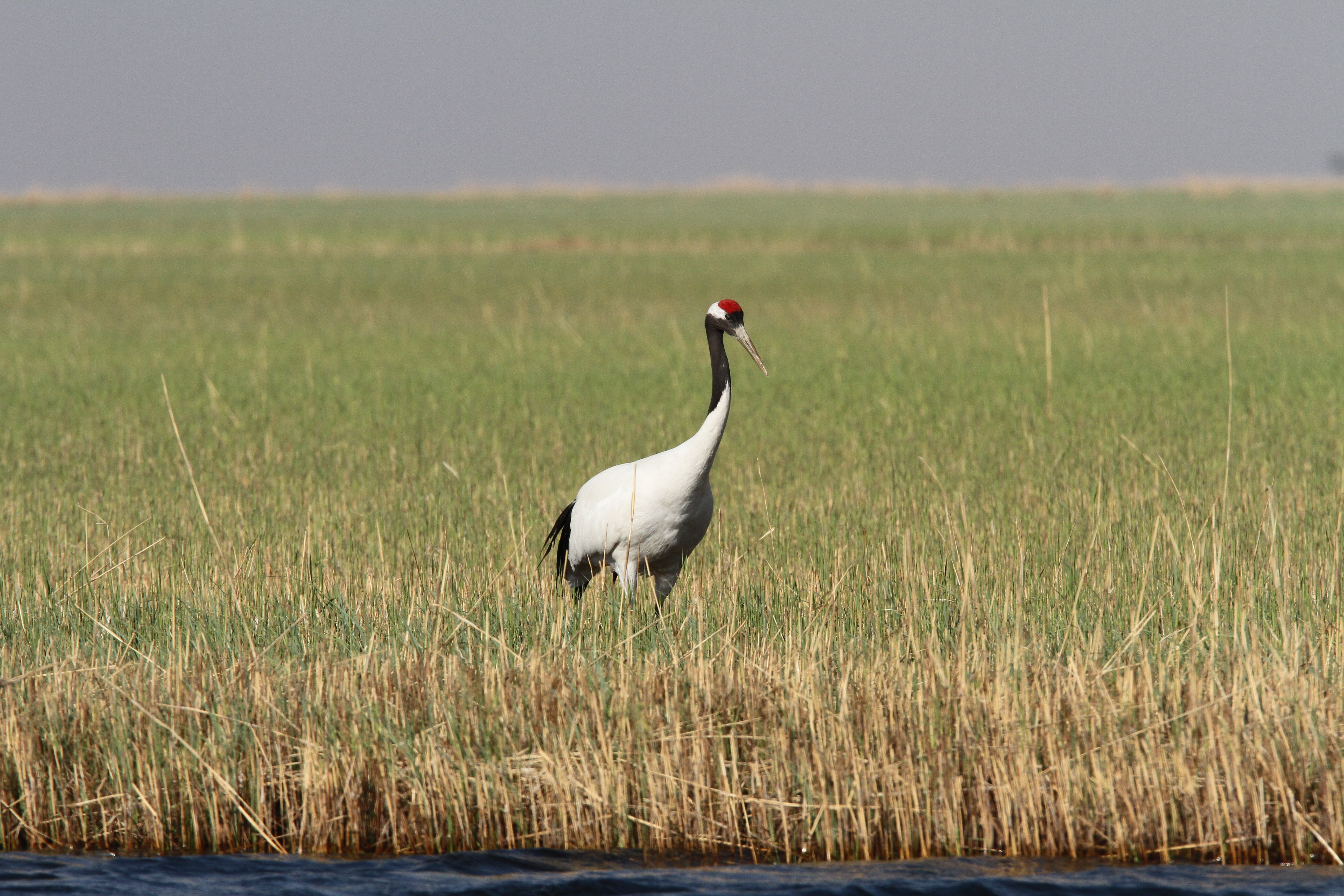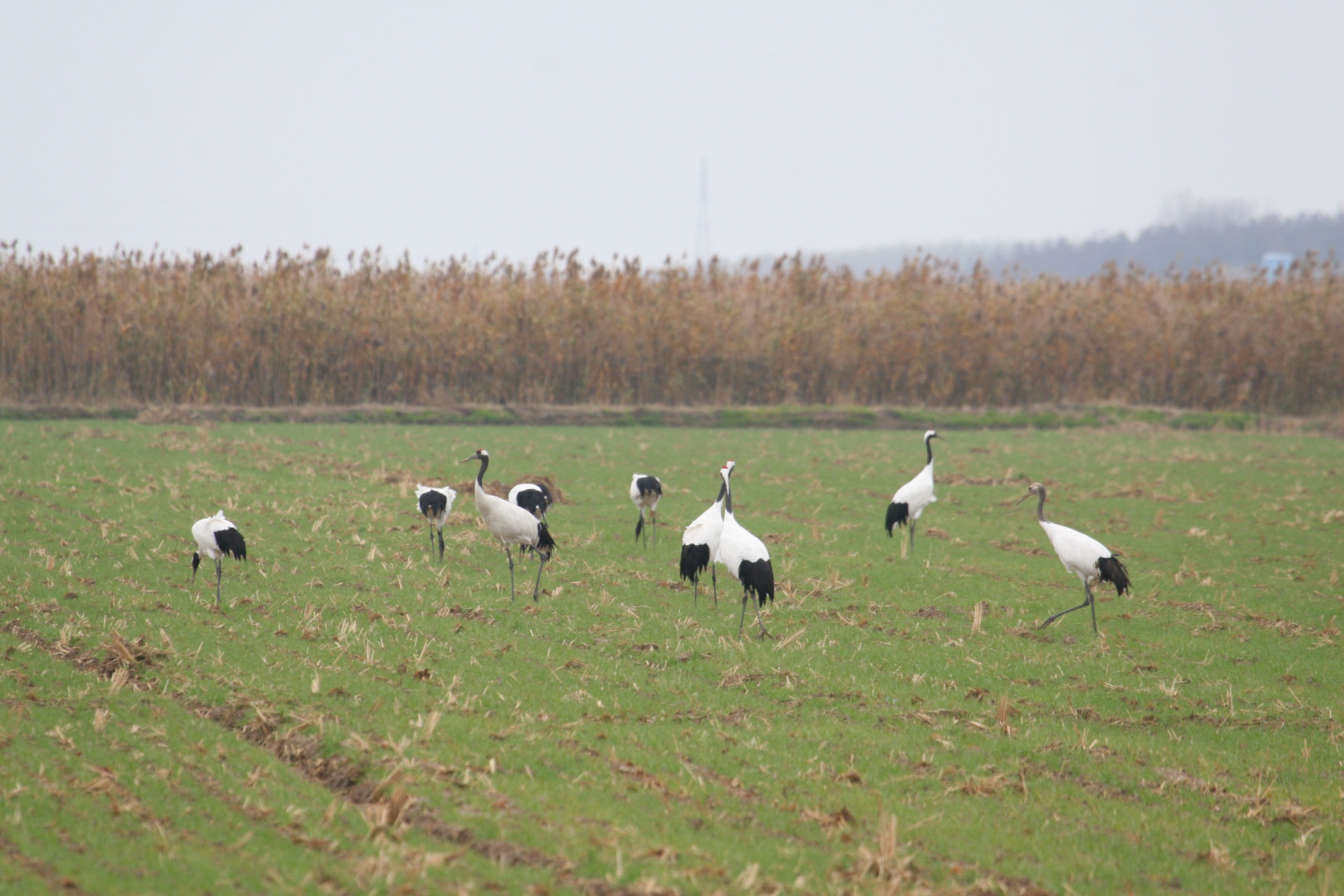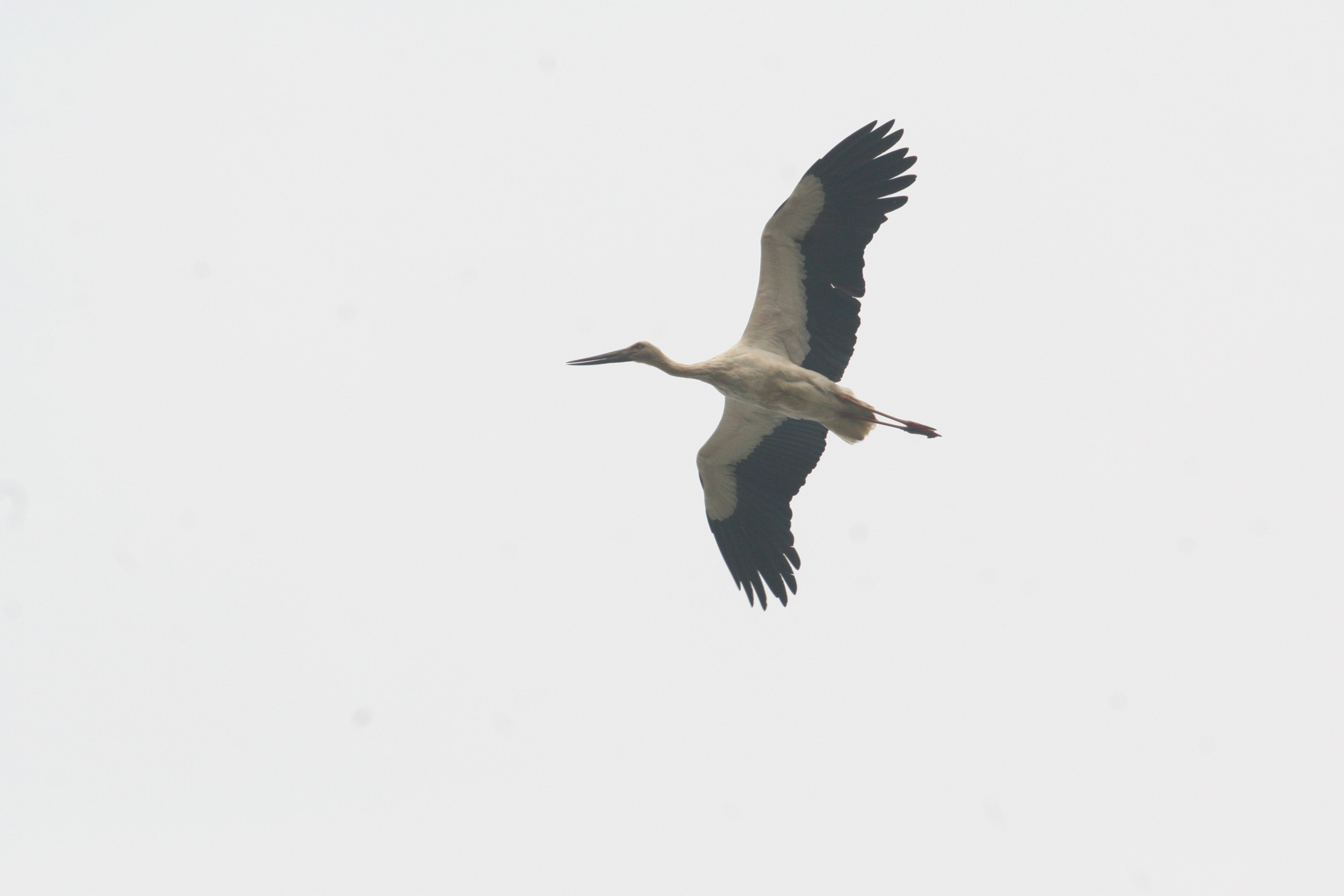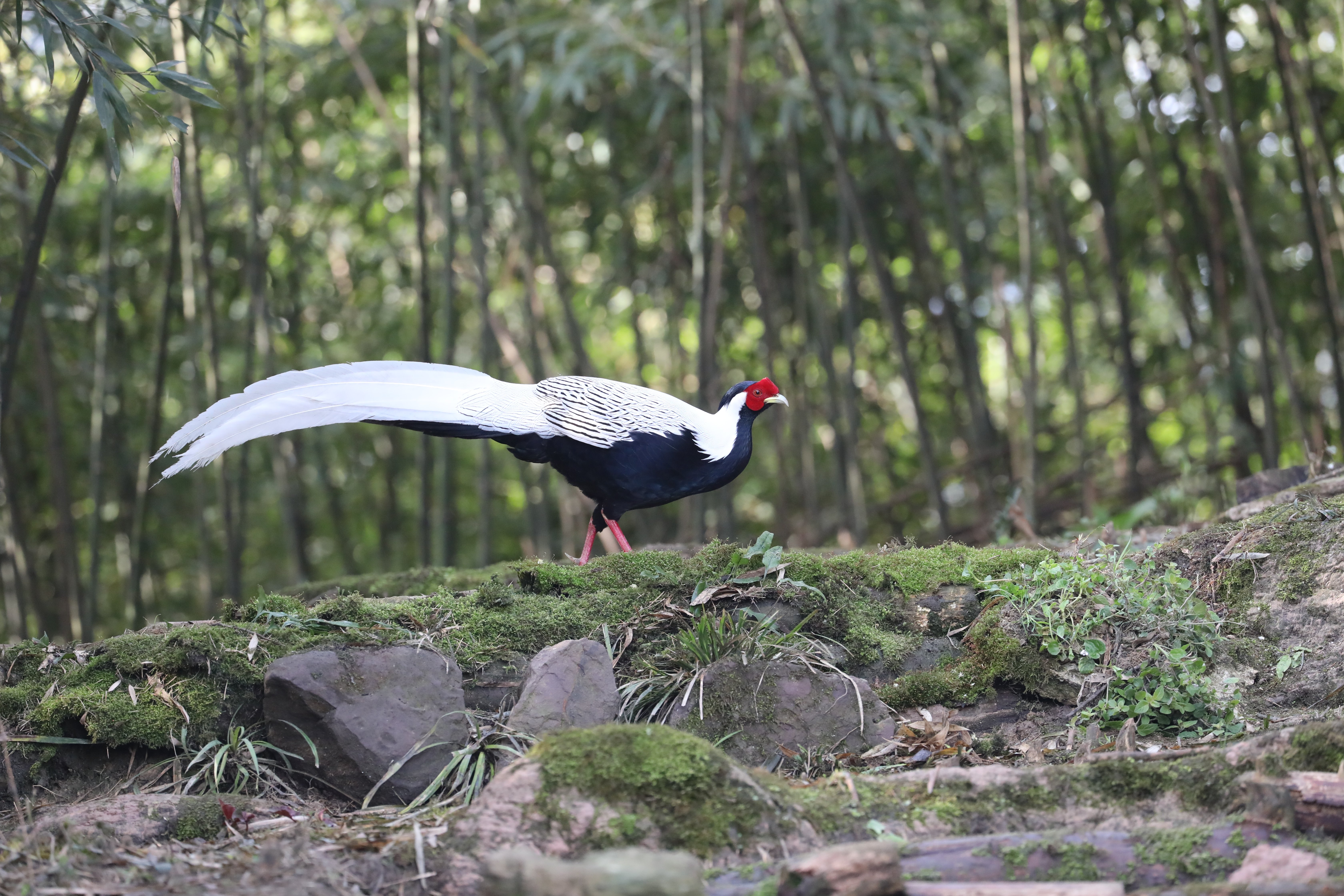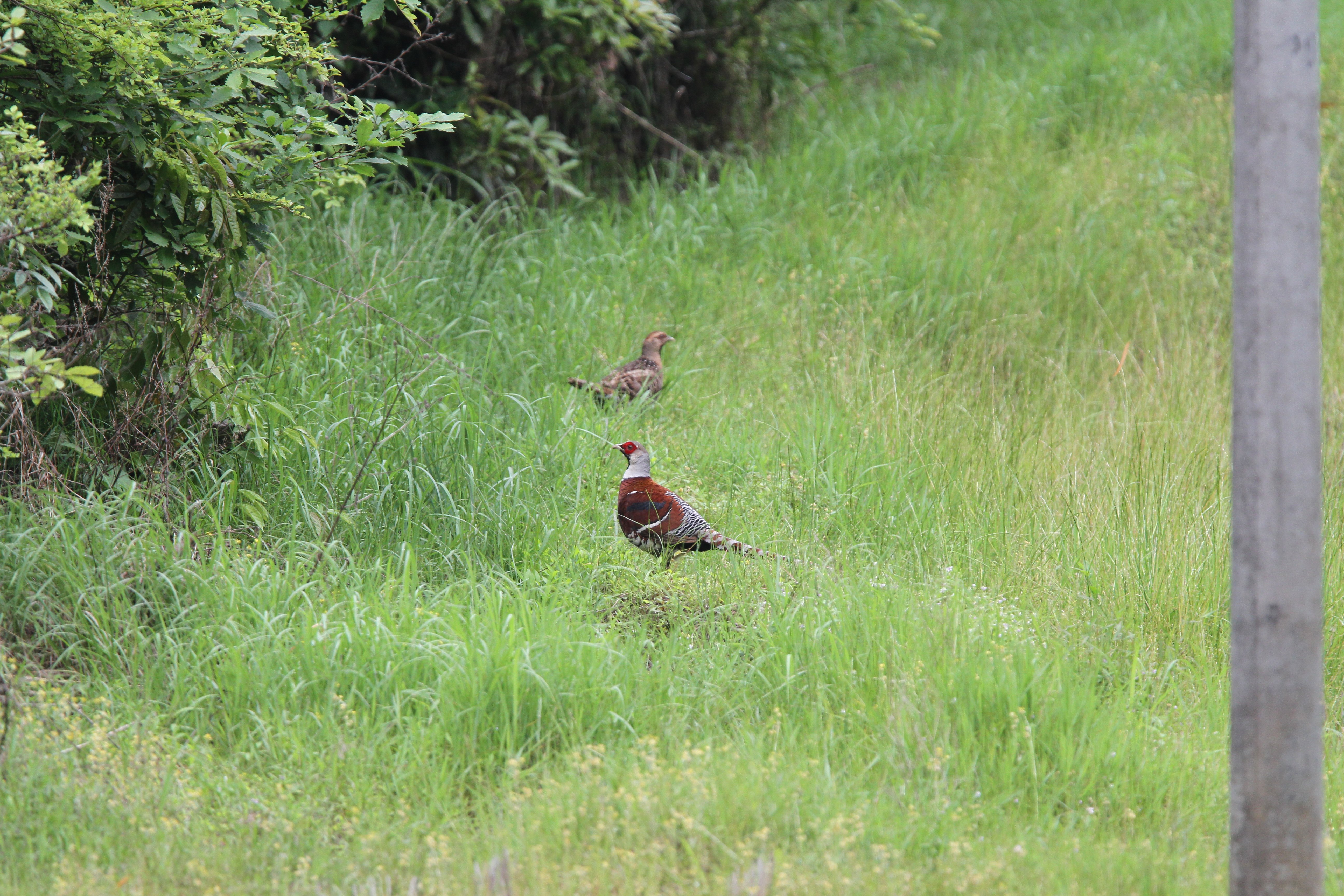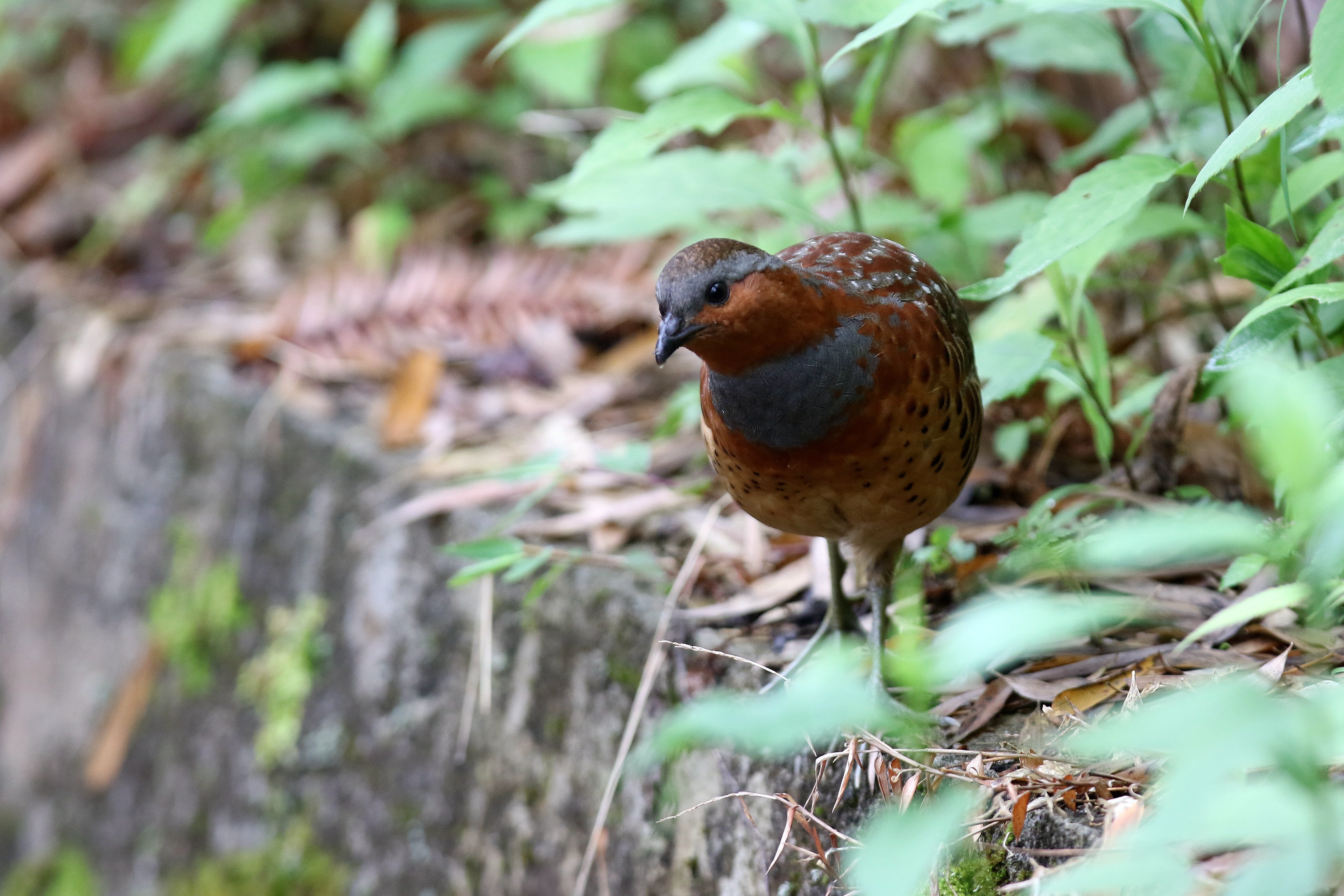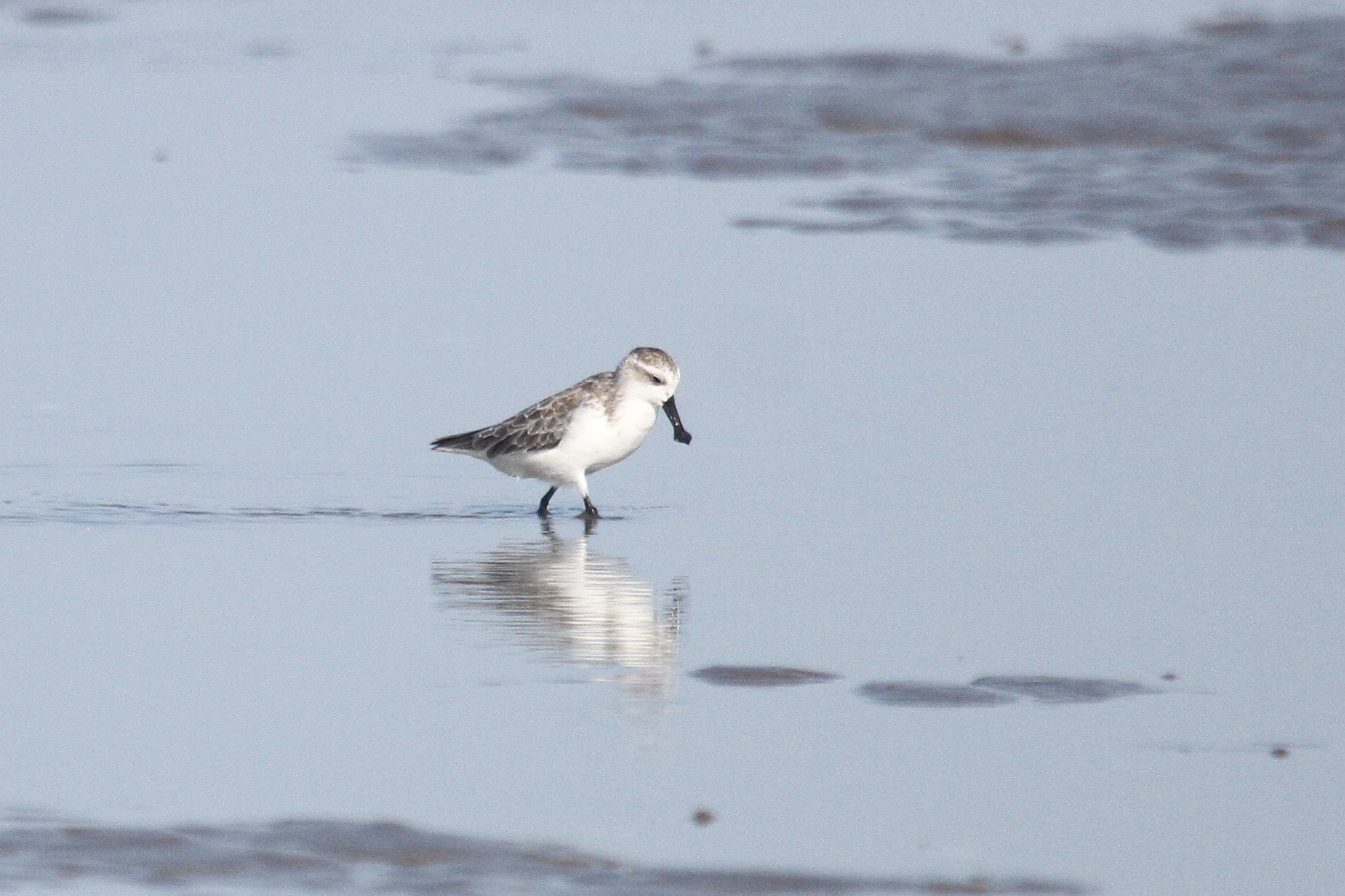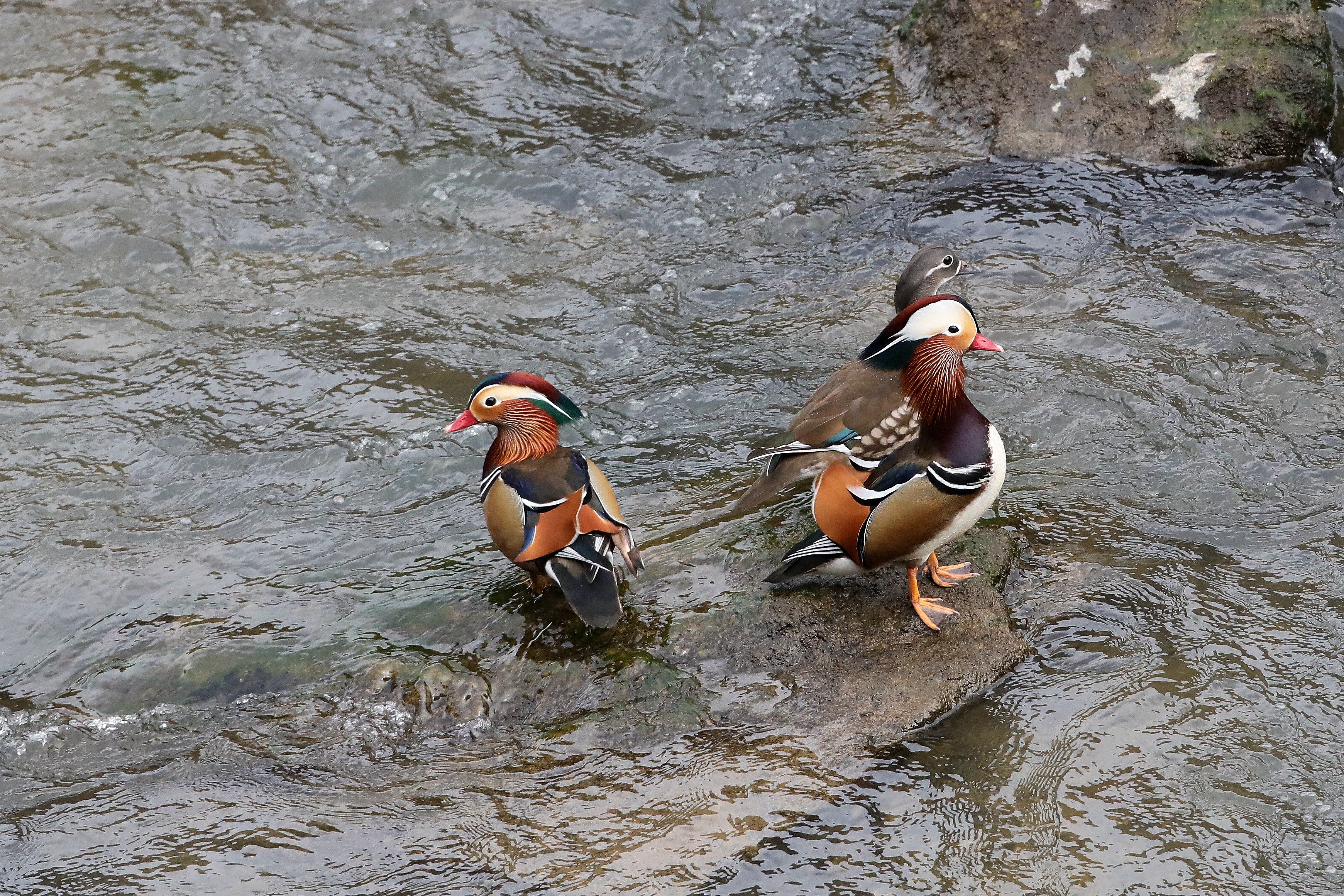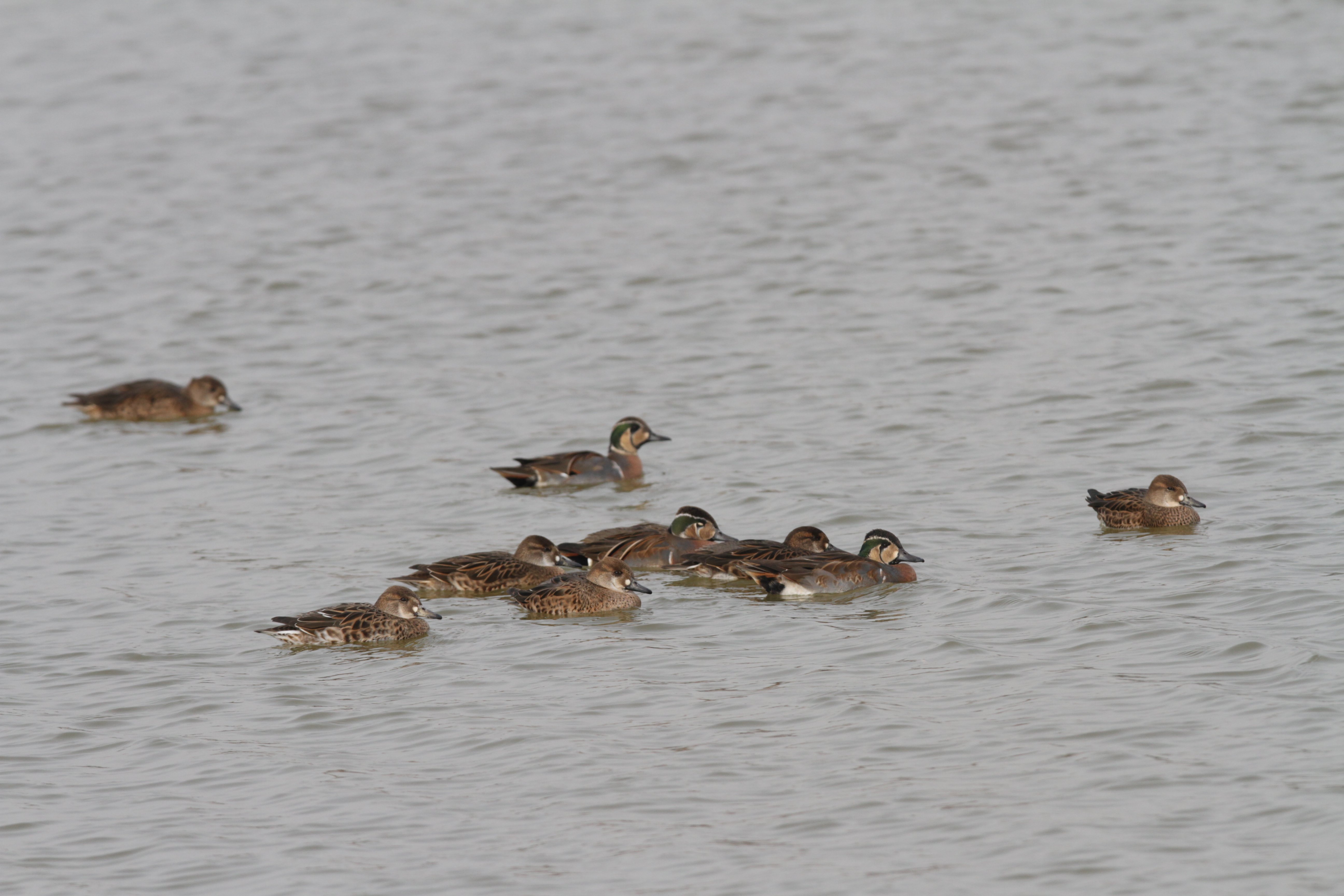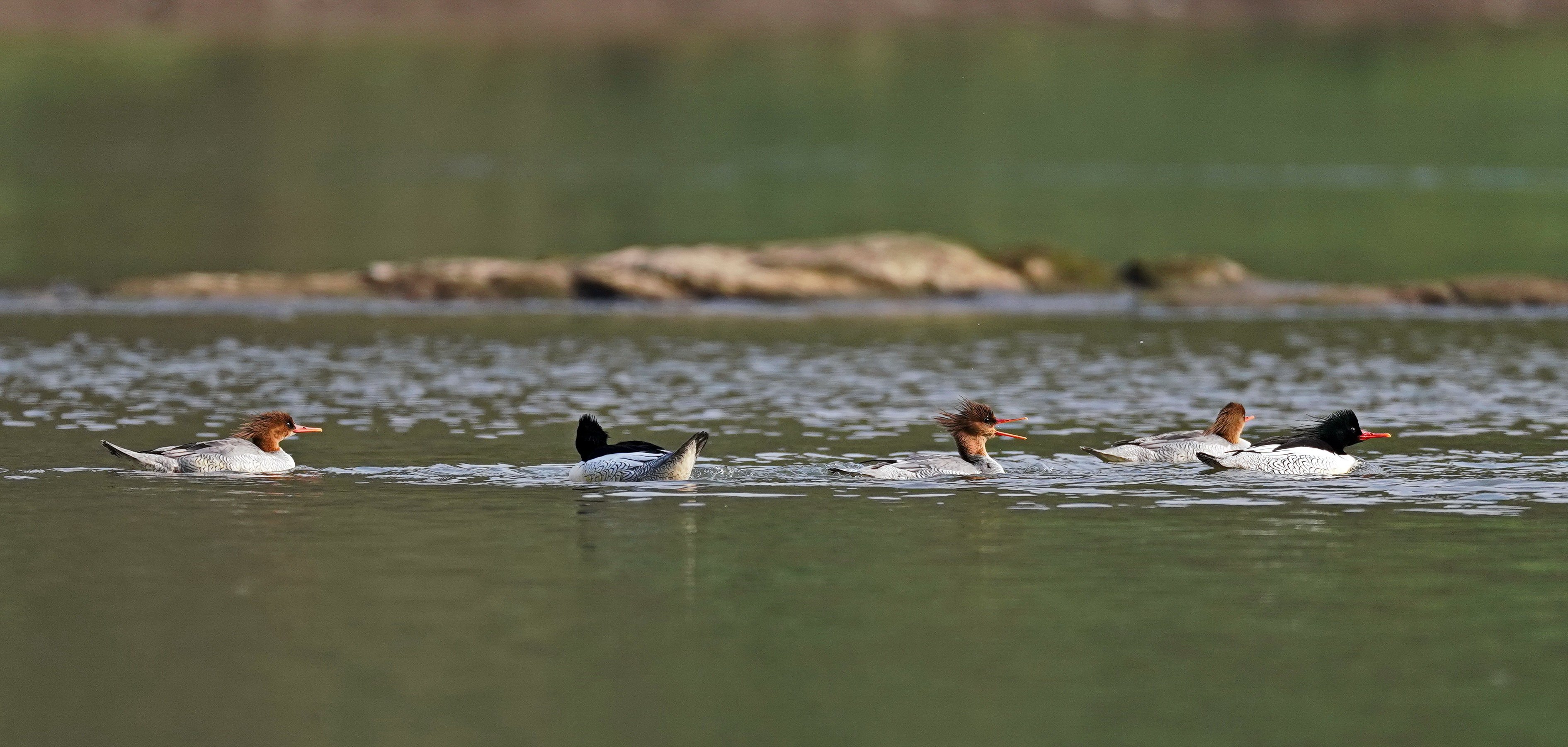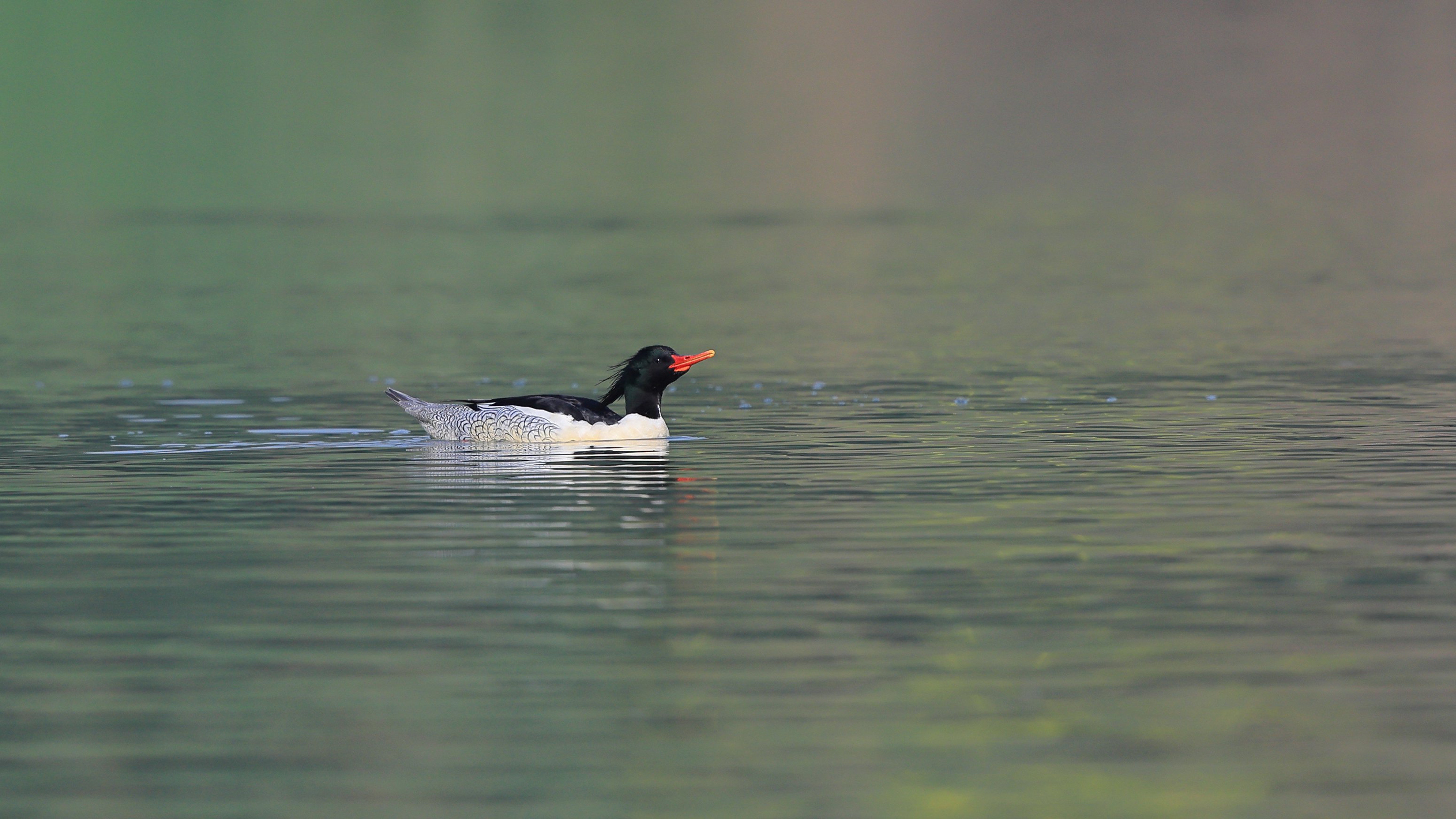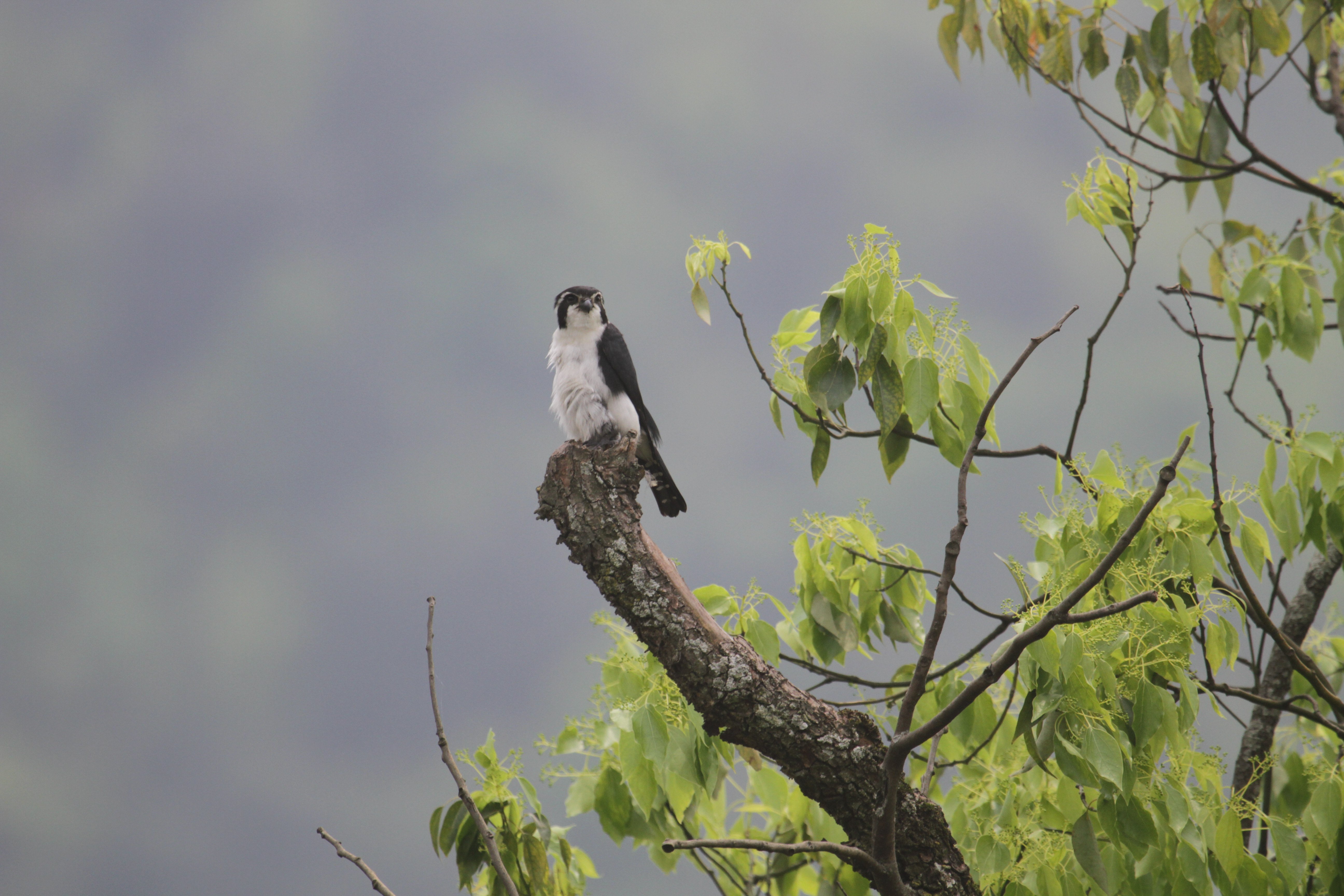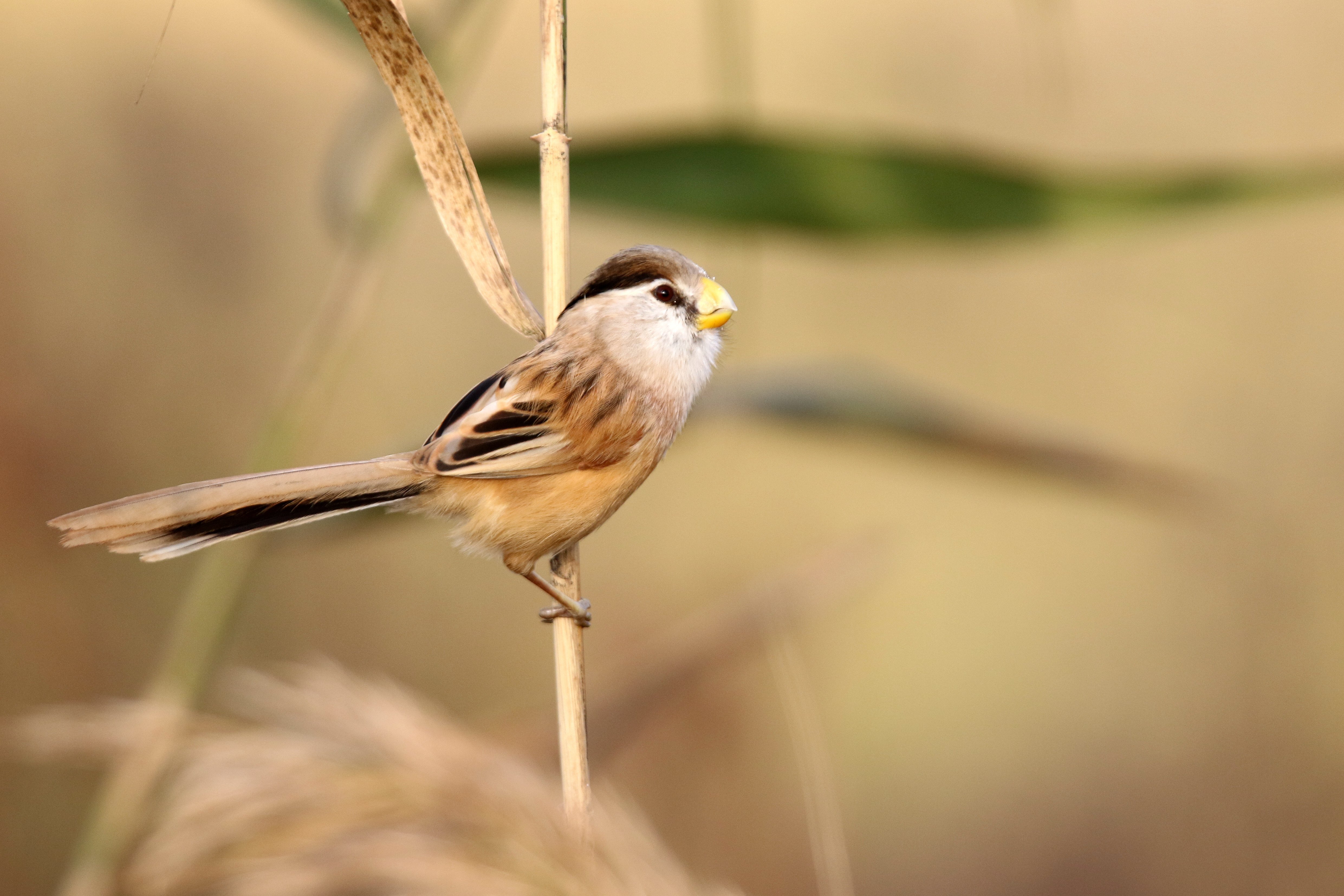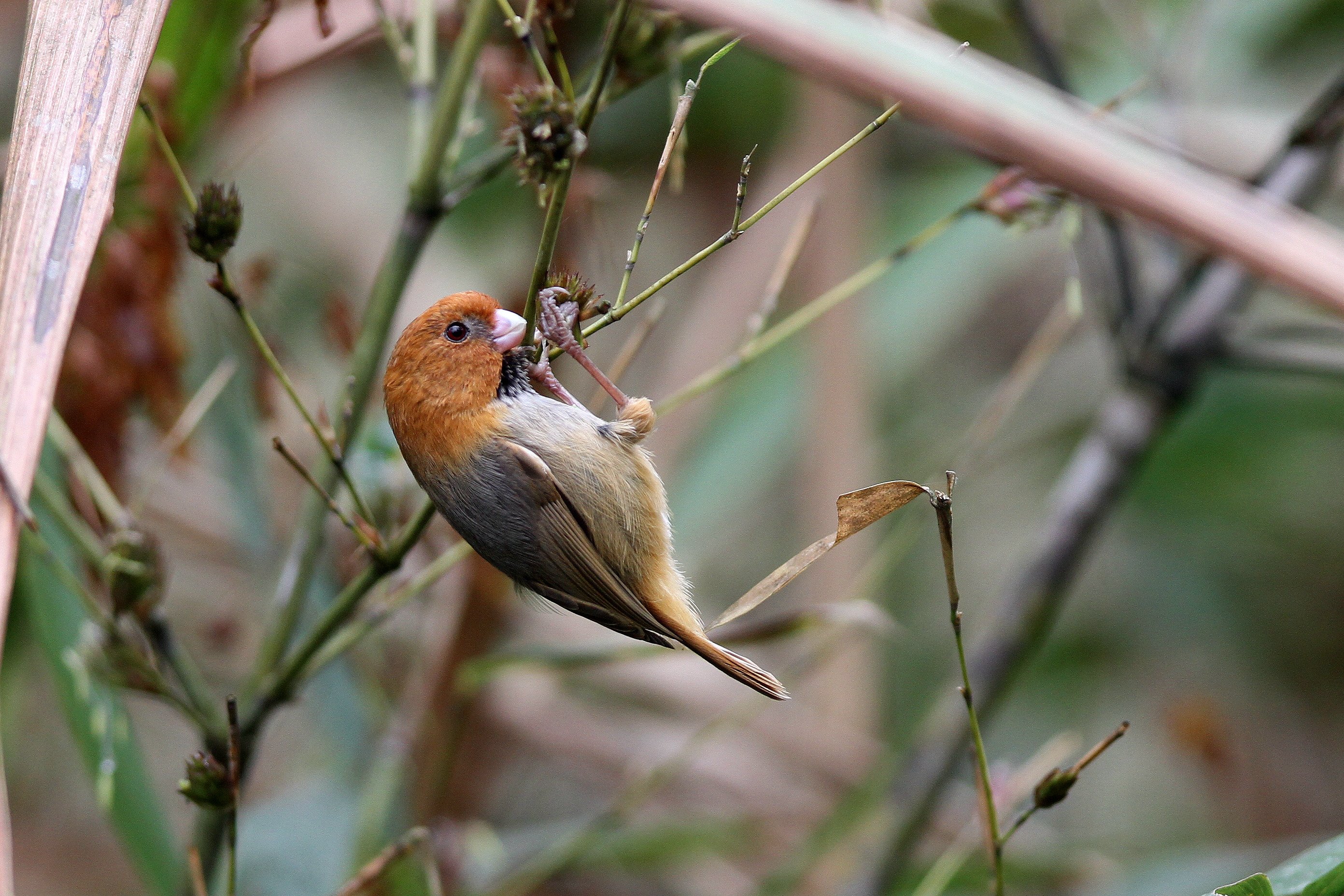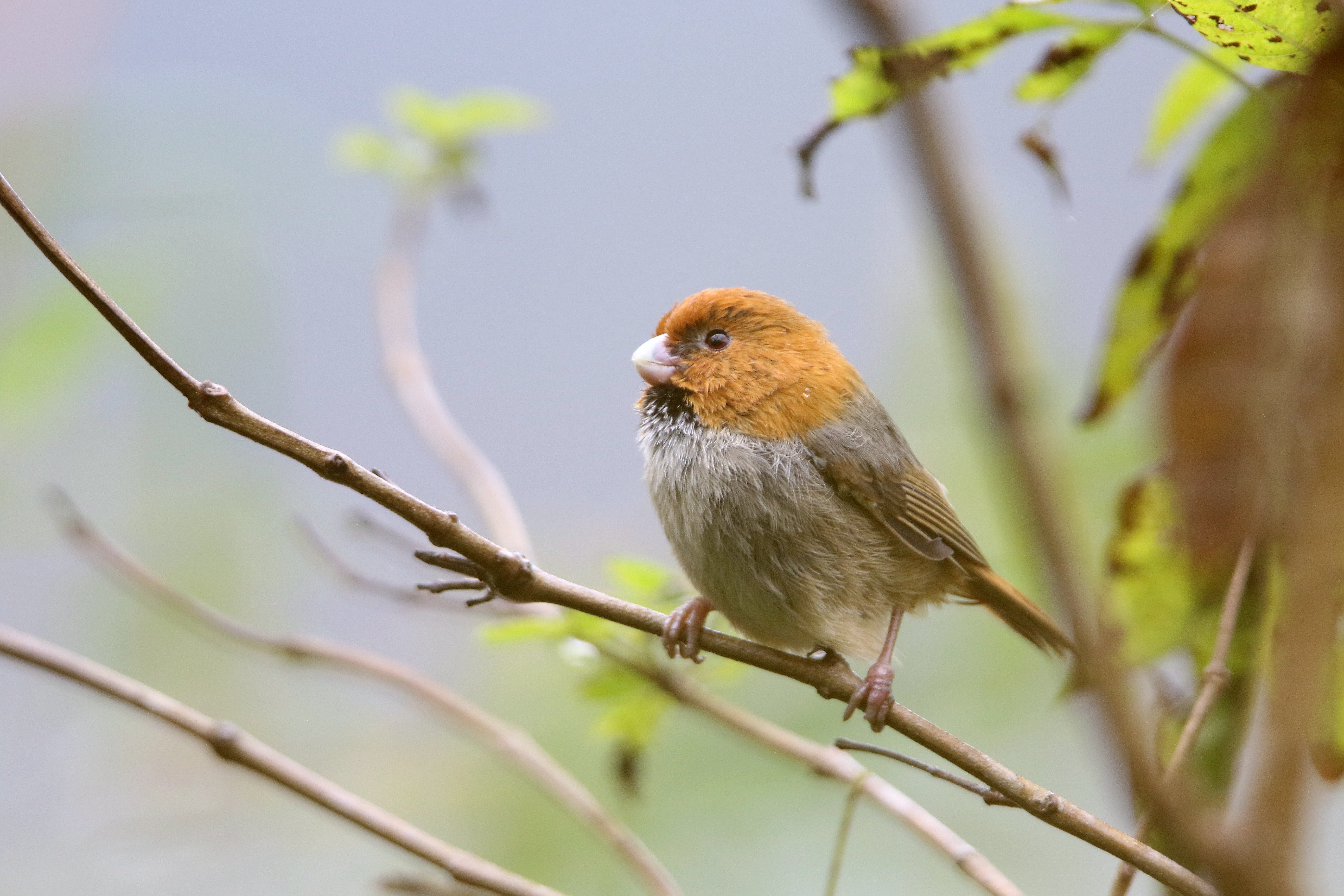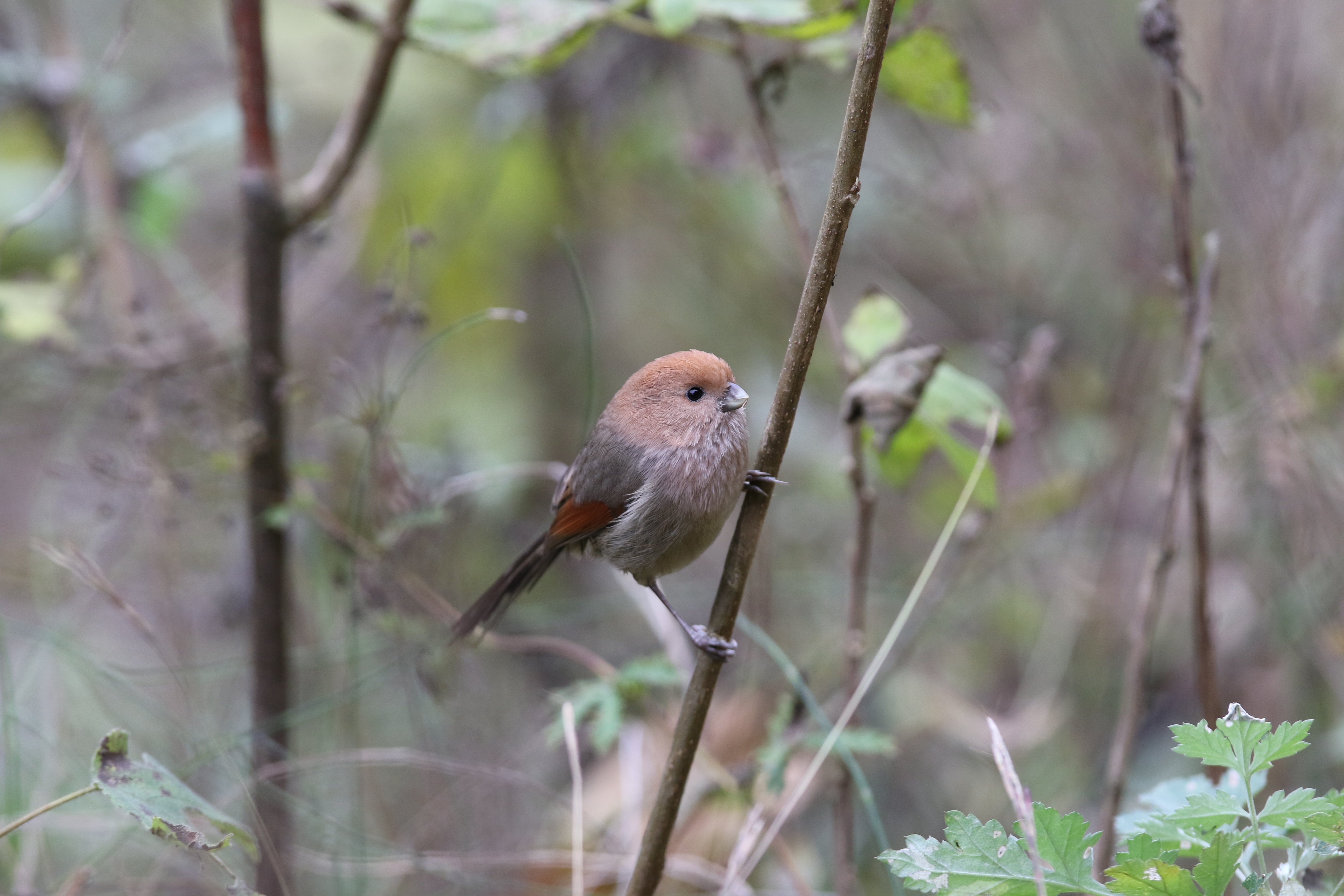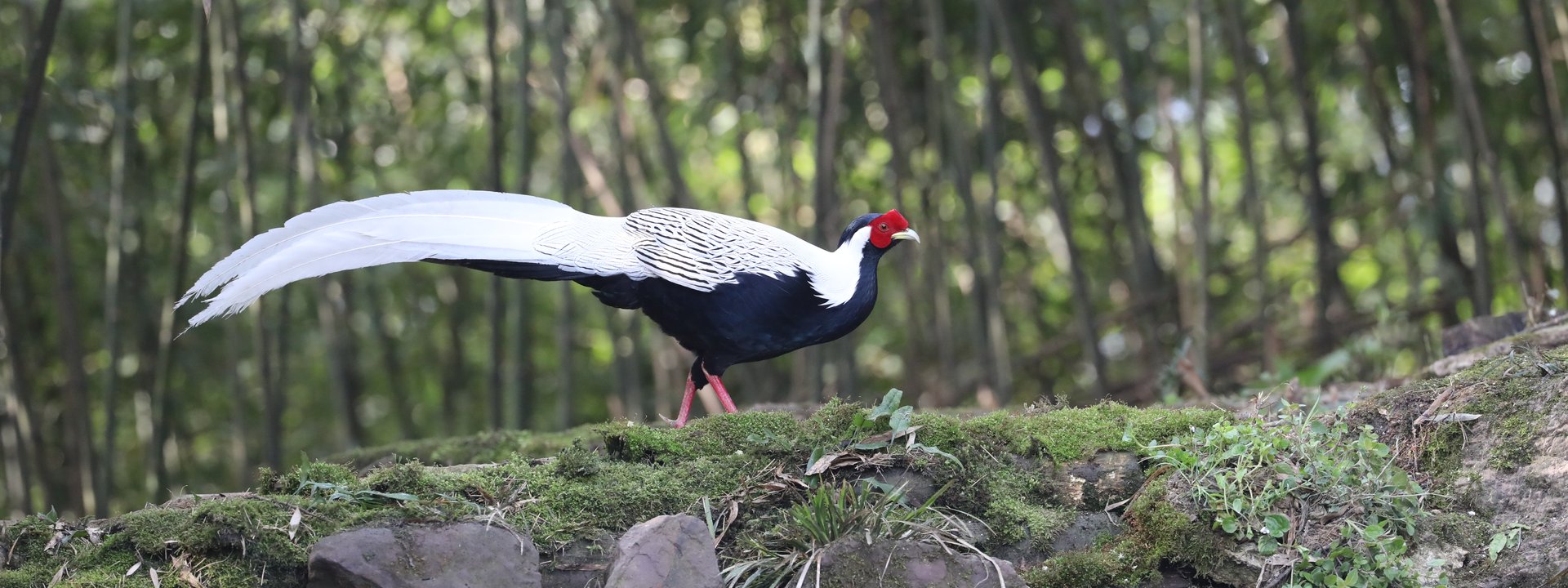China
Cranes, Pheasants and the specialities of the Southeast of China
A 16-day, small group birdwatching tour to SE China looking for a spectacular range of specialities including pheasants, cranes and a myriad of other great birds
Limosa’s birding tour to southeast China is new for 2024 and begins amidst a landscape of flat, open paddyfields, coastal mudflats and wetlands that are a winter home to up to 6 species of cranes plus migrating waders which could include the critically endangered Spoon-billed Sandpiper.
The reserves at Yancheng and Poyang Lake offer the opportunity for some spectacular winter birding with Siberian and Red-crowned Cranes amongst the species we hope to find. A ride on the ‘Bullet Train’ will take us inland where we will search for the endangered Scaly-sided Merganser, as well as Elliot’s Pheasant and the stunning Cabot’s Tragopan. There should also be a multitude of scimitar-babblers, bulbuls and buntings and all to be looked for in forested valleys and mountains that have been dubbed the ‘most beautiful countryside in China’.
Join us for some cracking winter birding and the excitement of our all new birdwatching tour led by Limosa's Colin Bushell and a specialist English-speaking Chinese bird tour guide.
Tour Dates & Prices
Thu 14th November 2024
Fri 29th November 2024
- Available
Tour Cost: 16 Days from £5295
What's Included?
- Limosa Tour Leader and expert English-speaking Chinese bird tour guide
- 14 nights accommodation in China
- All main meals
- Minibus transport
- Travel on 'bullet train' from Shanghai to Nanchang
- All excursions, entry fees, permits, tour based tips (including local drivers and guides) and taxes
- Limosa checklist of birds and mammals
Cost Excludes
International and domestic flights, insurance, China visa costs, drinks, airport meals, snacks and other items of a personal nature.
Notes
The Land Only Tour Cost is the amount you will pay Limosa.
Despite the end of pandemic restrictions, we have taken the decision to continue to price our holidays as excluding international flights.
To keep the process as simple as possible, we are working very closely with a dedicated agent at Travel Counsellors, Sacha Barbato, who is essentially now our “in house” flight consultant.
Sacha is a highly experienced independent ATOL bonded travel agent, and his contact details are as follows: sacha.barbato@travelcounsellors.com and 01603 360099
He will be able to advise you which flights we are recommending for each holiday and will be able to book these for you.
This will also sometimes give you the option to travel from a regional airport if you prefer.
Tour Highlights
- A fortnight of fantastic winter birdwatching in southeast China
- Coastal lowlands with up to 6 species of cranes including Siberian, Red-crowned and Hooded plus waders that could include the critically endangered Spoon-billed Sandpiper
- Bullet train ride from Shanghai to Nanchang
- Look for Oriental Stork, White-naped Crane, Scaly-sided Merganser and Pied Falconet at Wuyuan amongst the ‘most beautiful countryside in China’
- Search for some stunning pheasants: Cabot’s Tragopan, Elliot’s, Koklass and Silver Pheasants
- Opportunities to see White-necklaced Partridge, Reed and Short-tailed Parrotbills and Chestnut Bulbul
- Expertly led by Limosa’s Colin Bushell and a specialist English-speaking Chinese bird tour guide
Outline Itinerary
Fly London Heathrow-Shanghai, arriving Day 2. Birding on coastal mudflats and paddyfields. Night Dongtai
Dongtai looking for waders including Spoon-billed Sandpiper. Second night Dongtai
Morning birding at Dongtai then north to Yancheng Nature Reserve for cranes. Yancheng for two nights
Full day at Yancheng Nature Reserve, looking for cranes and wintering geese, ducks, buntings and Reed Parrotbill
Return to Shanghai and take 'Bullet Train' to Nanchang. Transfer to Wucheng for three night stay
Two days exploring the Poyang Lake area for cranes, wildfowl and Oriental Stork
Heading east to Wuyuan. Spend the afternoon birding river valleys. Wuyuan (2 nights)
Full day exploring riverine valleys for the rare Scaly-sided Merganser
Morning birding around Wuyuan then head south to Emei Feng for two nights
Two day looking for pheasants including Cabot’s Tragopan
Travel to Fuzhou. Late afternoon Fuzhou Forest Park. Night Fuzhou
Morning at Fuzhou Forest Park then drive to coast to look for shorebirds (including chance for Spoon-billed Sandpiper). Fly back to Shanghai. Night Shanghai Airport hotel
Fly Shanghai-London Heathrow
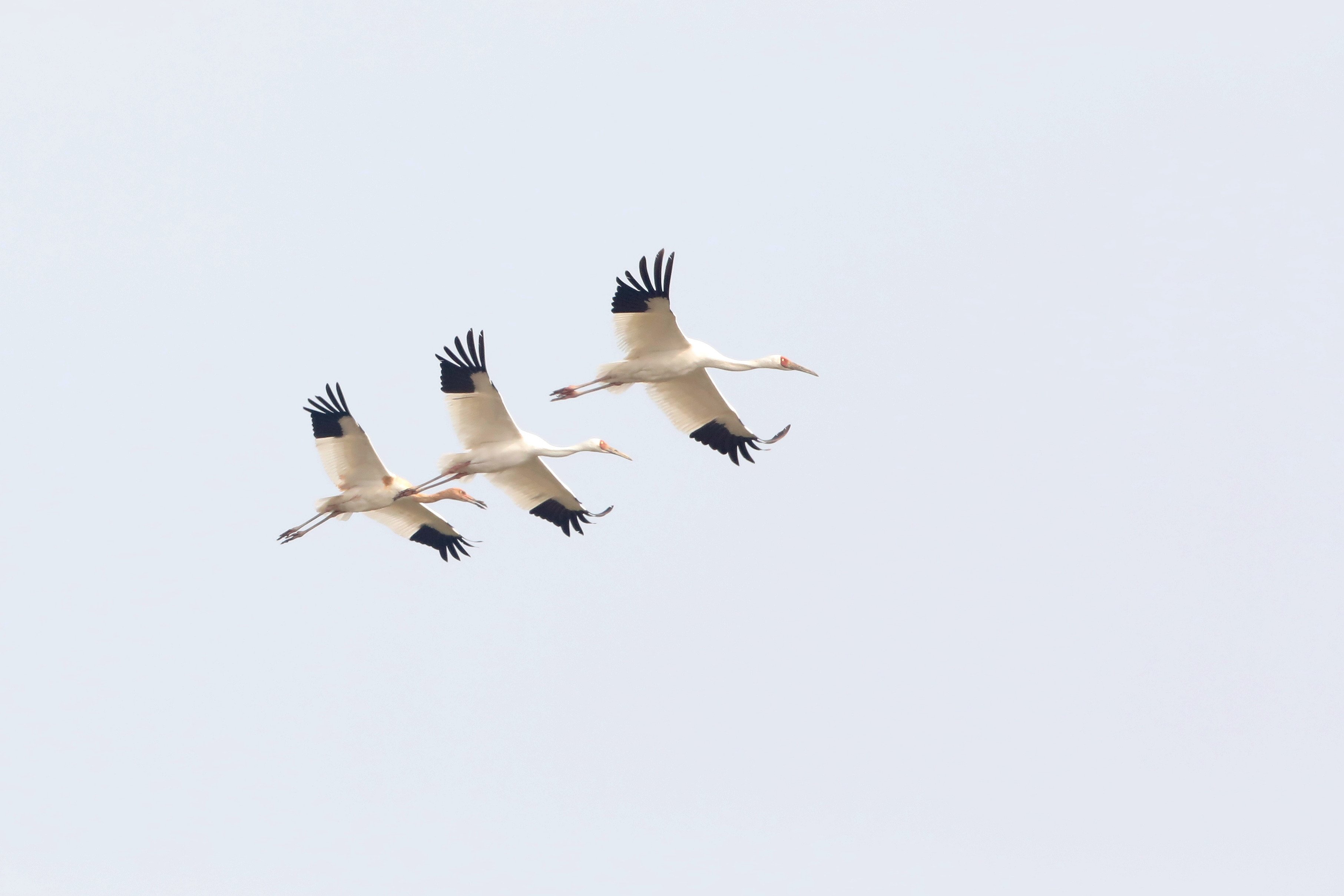
China is an enormous country that is only just beginning to open up and be truly appreciated by visiting birdwatchers. This exciting new tour begins amidst a landscape of low-lying coastal paddyfields and wetlands that are home to up to six species of wintering cranes including Siberian and Red-crowned. We will also explore coastal mudflats to look for waders which could include the critically endangered Spoon-billed Sandpiper.
We will then head inland from Shanghai to Nanchang on the appropriately named ‘Bullet Train’ to explore Puyong Lake and the beautiful valleys of Wuyuan for the endangered Scaly-sided Merganser. Last but by no means least, we head to the mountains and hill forests of Emei Feng and Fuzhou in search of some phenomenal pheasants, a multitude of special passerines before a final chance to look for Spoon-billed Sandpiper.
In a tour of two halves, we will spend our first seven days sifting through the teeming hordes of wildfowl, cranes and shorebirds that winter on the magnificent mudflats and wetlands of southeast China. Our birding begins along the coast to the north of Shanghai at Dongtai and Yancheng, before following the broad valley of the Yangtze inland to Nanchang and Poyang Lake - China’s biggest freshwater lake.
Our primary focus here will be to search of some of the world’s most endangered waterbirds, most notably cranes, and we hope to see up to six species: Siberian, Hooded, Red-crowned, Common, White-naped and Sandhill. The wildfowl possibilities are also very impressive with Baikal Teal, Falcated Duck and perhaps even Baer’s Pochard to look for, along with Tundra and Middendorff’s Taiga Bean Geese, Swan Goose and Russian White-fronted Goose. Oriental Stork and the rare Saunders’s Gull add to the mix, while at Yancheng we will work to make sure we do not miss the endemic Reed Parrotbill as well as checking the fields for bunting flocks and small woodlands for thrushes.
The ‘second half’ of this early winter tour starts at Wuyuan, a region that has been described as the ‘most beautiful countryside in China’. Although we will have moved away from the major wetlands, we still target a duck: the highly endangered and little-known Scaly-sided Merganser that overwinters on rivers close to the town. There are also many forest birds to enjoy including localised specialities such as Pied Falconet, Short-tailed Parrotbill, Moustached Laughingthrush, Huet’s Fulvetta and Fork-tailed Sunbird, not to mention a host of more widespread Chinese species.
By way of a mouth-watering finale, we move to the mountains, hills and forest patches of Emei Feng and Fuzhou National Forest Park (the latter only 10 km from the coast) in search of yet more stunning regional birds. Two phenomenal pheasants top the bill: Cabot’s Tragopan and Elliot’s Pheasant. Either of these mega species would be reason enough to book this fantastic tour but added to these specialities we might also be lucky to find Koklass and Silver Pheasants, White-necklaced and Chinese Bamboo Partridges, Pale-headed and Bay Woodpeckers, Black, Chestnut and Mountain Bulbuls, Grey-headed Parrotbill, Masked and Buffy Laughingthrushes and the endemic Grey-sided Scimitar-Babbler before we head back to the coast to look for Spoon-billed Sandpiper assuming we haven't found this highly threatened bird at the beginning of the tour.
At almost all of the locations we plan to visit there will also be the chance of finding some exciting wintering passerines including a fine selection of Asia’s spectacular thrushes with White's, Siberian, Grey-backed, Eyebrowed and Dusky all possible. The supporting cast could include Red-flanked Bluetail, Buff-bellied (japonicus) and (blakistoni) Water Pipits and Tristram’s, Rustic and Yellow-browed Buntings making this a wonderful trip, both in terms of the amazing variety of winter birds to be seen, and the fascinating places and landscapes we will travel through.
Led by Limosa guide Colin Bushell and an expert English-speaking Chinese bird tour guide, this winter birding tour to China is an experience that is simply too good to miss.
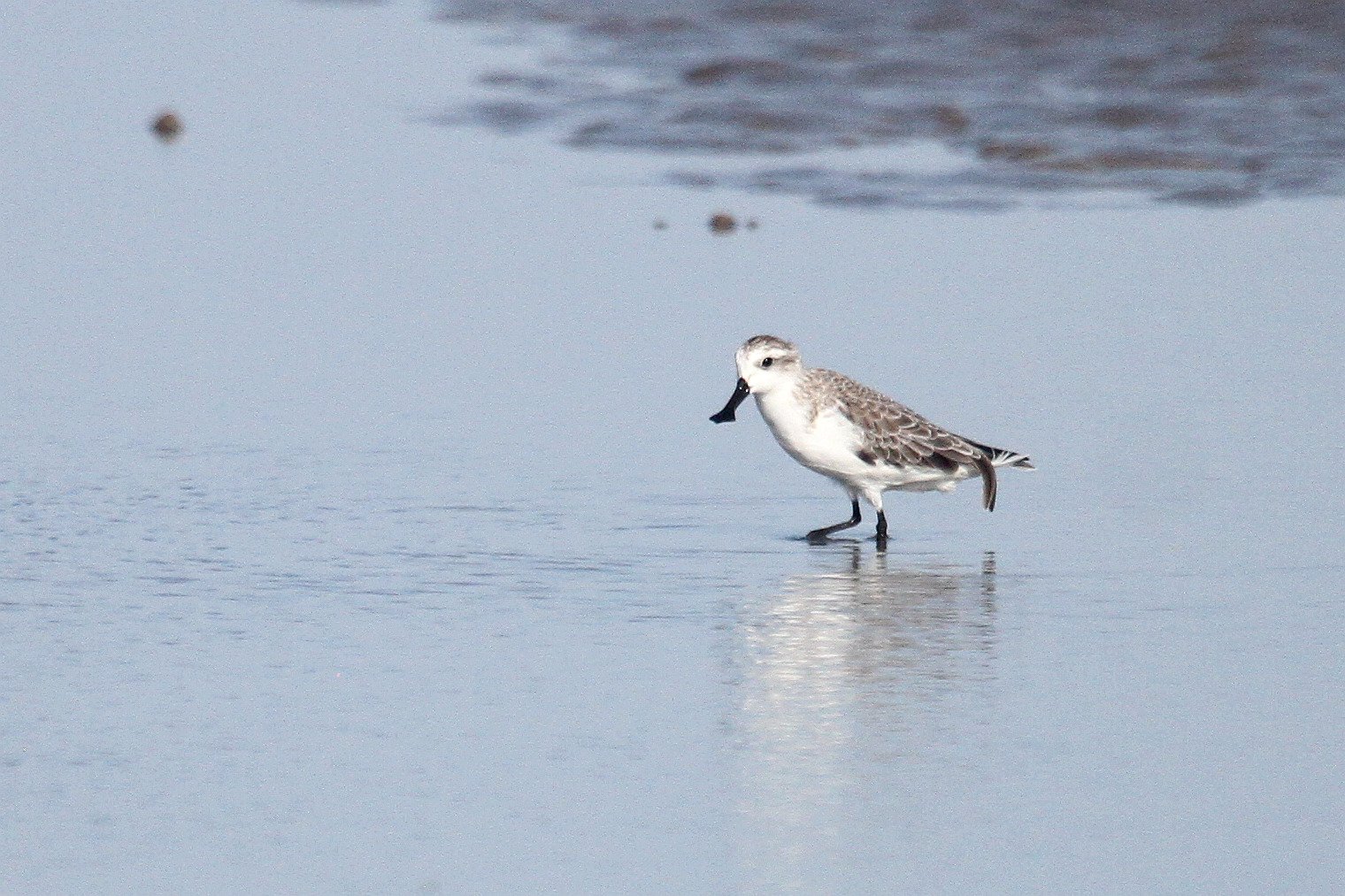
Days 1-2
FLY LONDON-SHANGHAI, TRAVEL TO DONGTAI
Our early winter birdwatching tour to southeast China begins with a flight from London Heathrow to Shanghai, where we arrive the following day. We will be met at Shanghai’s Pudong International Airport by our local guide and head north through the coastal paddyfields towards Dongtai, in eastern Jiangsu Province.
The extensive mudflats of the Chinese coast, together with paddyfields of the province are the wintering grounds for wealth of Asian wetland species. We will stop at a couple of reserves, hopefully having timed our visit to meet the predicted highest tides and so maximise our chances of seeing the best possible variety of shorebirds and wildfowl.
On the sandflats, we could find Dalmatian Pelican and numerous Kentish Plovers, pale orientalis Eurasian Curlews, osculans Eurasian Oystercatchers, Red-necked Stints, and Vega, Mongolian and Heuglin's Gulls, however, we will also hope to find one of the world's rarest birds, the critically endangered Spoon-billed Sandpiper. Small numbers of these highly threatened birds pass through on their southbound migration with a few staying into November so we will do our best to locate this unique species, although with the population seemingly still in decline, we will count ourselves as extremely fortunate should we find one.
A series of coastal lagoons and marshes hold sweeping flocks of ducks and there are often good numbers of Falcated Duck amongst the flocks of more familiar Eurasian Teal, Northern Pintail and Shoveler. We also hope to find Baikal Teal, Eastern Spot-billed Duck, Smew and Greater Scaup.
The rare Black-faced Spoonbill occasionally overwinters here alongside Saunders’s Gull - two threatened East Asian species that are well worth watching for and we may also find Brown-cheeked Rail (a Water Rail look-alike) which is a hard-to-find species in the reedy fringes of the lakes near the port. Two nights Dongtai
Days 3-5
DONGTAI AND YANCHENG
We plan to spend Day 3 back at the coast to the east of Dongtai continuing our quest for the specialities of this region, before tracking north to Yancheng National Nature Reserve, which is a couple of hours away. Yancheng lies at the heart of a series of wetlands along the Yellow Sea and its fine mix of habitats including agricultural fields, scrub, reedbeds and marshes, plus freshwater and brackish ponds are renowned for having one of the largest winter concentrations of waterbirds in East Asia. Indeed the area is so impressive that Yancheng has recently been granted United Nations World Heritage status.
Amongst the many species which should be present is the endangered Red-crowned Crane and the flocks of this impressive species can total up to 500 birds - a sizeable (but declining) proportion of the world’s population, which only numbers around 3,000 individuals.
Yancheng is also the wintering grounds for several other crane species and whilst the Common Crane is by far the most numerous, Yancheng also holds a few Hooded Cranes and sometimes one or two Sandhill Cranes that have flown in the ‘wrong’ direction from their breeding areas in northern Russia (not many people realise that up to 10,000 ‘Lesser’ Sandhill Cranes head onto the Russian tundra from North America to breed each year, but that they typically head back east to winter in states such as New Mexico and Texas). Finding these species involves driving around and scanning the landscape for them.
We should have time to not only enjoy the cranes but also the spectacle of the large numbers of wintering wildfowl. If we did not see them at Dongtai, we have further chances of the sought-after Baikal Teal and Falcated Duck, along with Eastern Spot-billed Duck, Greater Scaup and Smew. Tundra Bean Geese also winter in good numbers and amongst them we may find small numbers of the Middendorff’s Taiga Bean Goose.
Other birds we could find at Yancheng include the pale-eyed Oriental Stork and other wetland birds such as Great Bittern, Hen and Eastern Marsh Harriers plus a range of Eastern Palearctic gulls. Possibilities include Mongolian, Heuglin’s, Black-tailed, Vega and Kamchatka Gulls and we will also be hoping to find Saunders’s Gull and, with a large slice of luck, perhaps even a rare Relict Gull.
Patches of trees and scrub, fields and reed-fringed pools at Yancheng hold passerines and one species we will certainly want to look for is the endemic Reed Parrotbill which looks rather like a Bearded Tit on steroids!
Vinous-throated Parrotbills roam in small flocks, and there shold be Chinese Penduline Tits plus an impressive variety of buntings with ten or more species possible. Amongst the big flocks of Little Buntings, we may find Japanese Reed, Pallas’s Reed, Chestnut and the critically endangered Yellow-breasted Bunting, a bird that is believed to have declined by over 90% in recent decades.
Add the prospect of Lapland, Yellow-throated and Chestnut-eared Buntings as well as Oriental Skylark, Buff-bellied and Water Pipits, Red-flanked Bluetail, Daurian Redstart, Chinese Blackbird, Pale and Dusky Thrushes, White-cheeked Starling, Azure-winged Magpie, and Long-tailed and Chinese Grey Shrikes and you soon get the idea of what a special place this is! Two nights Yancheng
Day 6
RETURN TO SHANGHAI, BULLET TRAIN TO NANCHANG AND TRANSFER TO WUCHENG
Today is largely a day of travel, although we may have time for a little local birding first thing before we leave Yancheng return to Shanghai via the modern expressways and a new bridge over the mighty Yangtze River.
From the Shanghai Hongqiao Railway Station, we take the bullet train west into Jiangxi Province, before arcing south to Nanchang. This is a distance of c.750 km and we will cover this in just three and a half hours (reaching speeds up to 300km/hr on the fastest service). From Nanchang, we drive a short distance north, travelling from the airport to Wucheng, where we stay the next three nights not far from the remarkable Poyang Lake. Night Wucheng
Days 7-8
POYANG LAKE
Poyang Lake is China's biggest freshwater lake and during the winter is home to some 160,000 birds, making it one of the key habitats for migratory species in Asia. About 95% of the world's Siberian Crane population winter here, as well as 50% of all White-naped Cranes and thousands of Swan Geese and Tundra (Bewick’s) Swans.
Our base at Wucheng is in the southeast section of the reserve and we will concentrate our efforts here. During our stay, we will move about mainly by bus and drive to various sites, but there is also the possibility of taking a boat trip depending on the whereabouts of the cranes.
Our initial focus will be on seeing the impressive numbers of cranes that winter on the reserve. Siberian Crane is now classified as ‘Critically Endangered’ by Birdlife International having suffered a long-term decline in numbers. In 2008 a count of 3,750 individuals was made at Poyang Lake but the building of dams along the Yangtze River threatens the water levels on the lake, although the species itself is fully protected both in China and along the migration route.
Standing up to 1.5m in height, we have a good chance to see several hundred of these amazing birds, plus thousands of elegant White-naped Cranes and hundreds of Common Cranes. The scarcer Hooded Crane is also possible, as well as both Oriental and Black Storks. This really is a place just to stand back and revel in the wondrous sight and sound of a landscape chock full of birds!
As at Yancheng, the range of species is remarkable and we will also enjoy the large numbers of wildfowl that overwinter here. An estimated population of over 2,000 Tundra (Bewick’s) Swans, 10,000 Swan Geese, 5,000+ Greater White-fronted Geese plus lower numbers of Greylag, Lesser White-fronted and Taiga Bean Geese can all be found on the lake. Among numerous commoner wildfowl, we also have good chances of Whooper Swan, Ruddy Shelduck and Eastern Spot-billed Duck and if we were exceptional fortunate, we might even find the critically endangered Baer’s Pochard, a bird that is now believed to have a world population of under one thousand individuals.
As well as waterfowl, there should be plenty of shorebirds with flocks of Pied Avocets, Dunlin, Black-tailed Godwit and Spotted Redshank. We could also find Northern Lapwing, Greenshank, Temminck’s Stint and Marsh Sandpiper and will want to check any Little Ringed Plovers carefully as Long-billed Plovers can sometimes be found here. Eurasian Spoonbill, Dalmatian Pelican, Brown Crake, Hen Harrier, Marsh Grassbird (formerly Japanese Swamp Warbler) and ‘real’ Mandarin Ducks and Chinese Water Deer, both being native here of course, also frequent this vast wetland area, and we may hear Ruddy-breasted Crakes call from the ditches.
However, it will not be all wetland species with other possibilities including Eastern Buzzard, Eastern Imperial Eagle, Daurian Jackdaw and Rook (here of the eastern form pastinator which looks very different to western birds as they have no bare facial skin). Pipits such as Richard's, Red-throated, japonicus Buff-bellied and blakistoni Water Pipits can all be found here, while starlings come in the form of the impressive White-cheeked and Black-collared Starlings, and Crested Myna. The endemic Red-billed Starling is sometimes about and we will also want to check any buntings we find with chances of Chestnut-eared, Yellow-throated and Yellow-browed.
At Poyang Lake we also have a chance of spotting the critically endangered, freshwater Yangtze Finless Porpoise. Two further nights Wucheng
Day 9
POYANG LAKE TO WUYUAN
This morning we set off east, cutting across the southern tip of Poyang Lake en route to Wuyuan. The drive should take around four hours along highways that have only recently been built. Having taken lunch along the way, on arrival in Wuyuan County we will find ourselves in a seemingly different world of small villages and white houses along a forested river valley.
Wuyuan County has been described as the "most beautiful countryside in China" and is also home to some of the best-preserved ancient architecture in all China, with some buildings dating from 740AD. Whilst its relative remoteness has helped to protect its villages from too much development, its secluded rivers are also home to the highly sought-after, rare and predictably shy Scaly-sided Merganser.
If we have time at the end of the day, we will take a quick bird walk locally. There are usually plenty of birds to see, mainly bulbuls (including the stunning Chestnut Bulbul) and thrushes (with Dusky Thrush, Grey-backed and Chinese Blackbirds amongst the possibilities). Along the river, we will look for Plumbeous Water Redstart, White-crowned Forktail, Rufous-faced Warbler and Brown Dipper, while a speciality of the valley is the diminutive Pied Falconet. Night Wuyuan
Day 10
WUYUAN
We spend the whole day at Wuyuan, taking time to explore the valleys, rivers and scrub-covered hillsides. This area boasts an impressive list of birds, many of which will be new for our trip.
Topping the bill is the rare and little-known Scaly-sided Merganser. Scanning from bridges and walking beside the river in our quest for this shy and elusive sawbill, we should see dozens of Buff-bellied Pipits, along with Mandarin Duck, Crested Kingfisher and perhaps even Long-billed Plover. Though the mergansers like to keep their heads down, with patience we should find them. Scaly-sided Mergansers breed in NE China and eastern Russia, and come to Wuyuan for the winter. With a global population estimated by Birdlife International as being potentially as low as 2,000 pairs, we will make finding this endangered bird our number one target for the morning.
We will also want to explore the surrounding forest and bamboo patches as these are home to an equally fine range of birds. A mongst them are a good numbers of rare and localised species, such as Pied Falconet, Short-tailed Parrotbills (which certainly live up to their name), Huet’s Fulvetta, Chestnut Bulbul, Grey-sided Scimitar-Babbler and the eastern race of Moustached Laughingthrush.
We also have a good chance of finding the tiny-yet-vocal Chinese Bamboo Partridge, Grey-headed Woodpecker, Collared Finchbill, Chinese Hwamei and Fork-tailed Sunbird, whilst Grey-capped Pygmy Woodpecker, brilliant Grey-chinned Minivets, Black-throated Bushtit and Vinous-throated Parrotbills rove in small flocks. Mountain Bulbuls also feed in small groups, but Streak-breasted Scimitar-Babbler and both Masked and White-browed Laughingthrushes are generally more difficult to see, as is Brownish-flanked Bush Warbler. Pallas’s Leaf Warblers call from the trees and the handsome Russet Sparrow can also be seen. Night Wuyuan
Day 11
WUYUAN TO EMEI FENG
We will depart early from Wuyuan and drive for about five hours to Emei Feng in Fujian Province. Having stopped for lunch along the way, we aim to arrive at Emei Feng by early to mid-afternoon to give ourselves time to begin our search for the shy but impressive Elliot's Pheasant, which can sometimes be found feeding at the edge of small fields and forest clearings early and late in the day. Night Emei Feng
Days 12-13
EMEI FENG
We are likely to start our first full day in Emei Feng by being out at daybreak at the start of what promises to be two superb days in the field.
We will want to be on station a little before it gets light so we are in prime position for slowly driving up into the mountains in search of Elliot's Pheasant. This large pheasant is endemic to southeast China, however, it is very shy. Emei Feng is currently consider the best site to find it and whilst during the day, the birds often remain hidden within patches of bamboo, they emerge early mornings onto tracks to take grit and to call.
The mountain’s other main target is the beautiful and spotted Cabot's Tragopan. Also endemic to SE China, this fabulous pheasant is found at higher altitudes. Although it too is difficult to see, we have a good chance of finding birds as we silently walk along the upper section of road. Completing the pheasant list, we also have chances for both Koklass and Silver Pheasants.
Also endemic to southeast China, White-necklaced Partridge, a handsome member of the Arborophila hill partridge family, can be found along the edges of the road, as can the equally smart Chinese Bamboo Partridge. With Collared Owlet, Bay Woodpecker, Spotted Forktail, Sultan and Yellow-cheeked Tits, White-bellied Erpornis and White's Thrush amongst the other possibilities, there should be plenty to look for during our two days in this spectacular region. Second night Emei Feng
Day 14
EMEI FENG TO FUZHOU FOREST PARK
We will drive southeast this morning (for about four hours), as we head back towards the coast. Our destination is Fuzhou, where we spend the night at a good quality city hotel.
Just north of the town, Fuzhou Forest Park boasts a network of trails through the forested hillsides that give access to this exceptional patch of lowland forest. There is more great birding to be had here, especially in the higher reaches of the forest, where we have further chances for White-necklaced Partridge and Silver Pheasant. Other birds we could find include Red-headed Trogon, Chestnut Bulbul, Slaty-backed and Little Forktails, Grey-headed Parrotbill, both Greater and Lesser Necklaced Laughingthrushes and Tristram’s Bunting. Night Fuzhou
Day 15
FUZHOU FOREST PARK, COASTAL BIRDING AND FLIGHT TO SHANGHAI
We will make an early morning visit back to Fuzhou Forest Park where one of the birds we will look for (assuming we have not already seen it) is the Spotted Elachura. Resembling a minuscule wren-babbler, this diminutive bird looks a little like a South American antwren but has recently been reclassified and placed in its own monotypic family Elachuridae.
Fuzhou’s forests are also home to a wide range of other species and additional species we could see include Great Barbet, Speckled Piculet, Rufous, Pale-headed and Bay Woodpeckers, Large Woodshrike, Scarlet Minivet, Asian Stubtail, Orange-bellied Leafbird, Mugimaki Flycatcher, Eyebrowed and Siberian Thrushes, Rufous-faced Warbler, Indochinese Yuhina and Olive-backed Pipit.
Depending on whether we saw it at the beginning of the tour, we may spend the afternoon at the coast as there are further chances for Spoon-billed Sandpiper before taking a flight (about 90 minutes) back north to Shanghai, where we spend our final evening in China at a hotel near Shanghai airport. Night near Shanghai Airport
Day 16
FLY SHANGHAI TO LONDON
We will have breakfast at our hotel prior to check-in for our flight back to London Heathrow where we should arrive later on the same day and our winter tour to southeast China concludes.
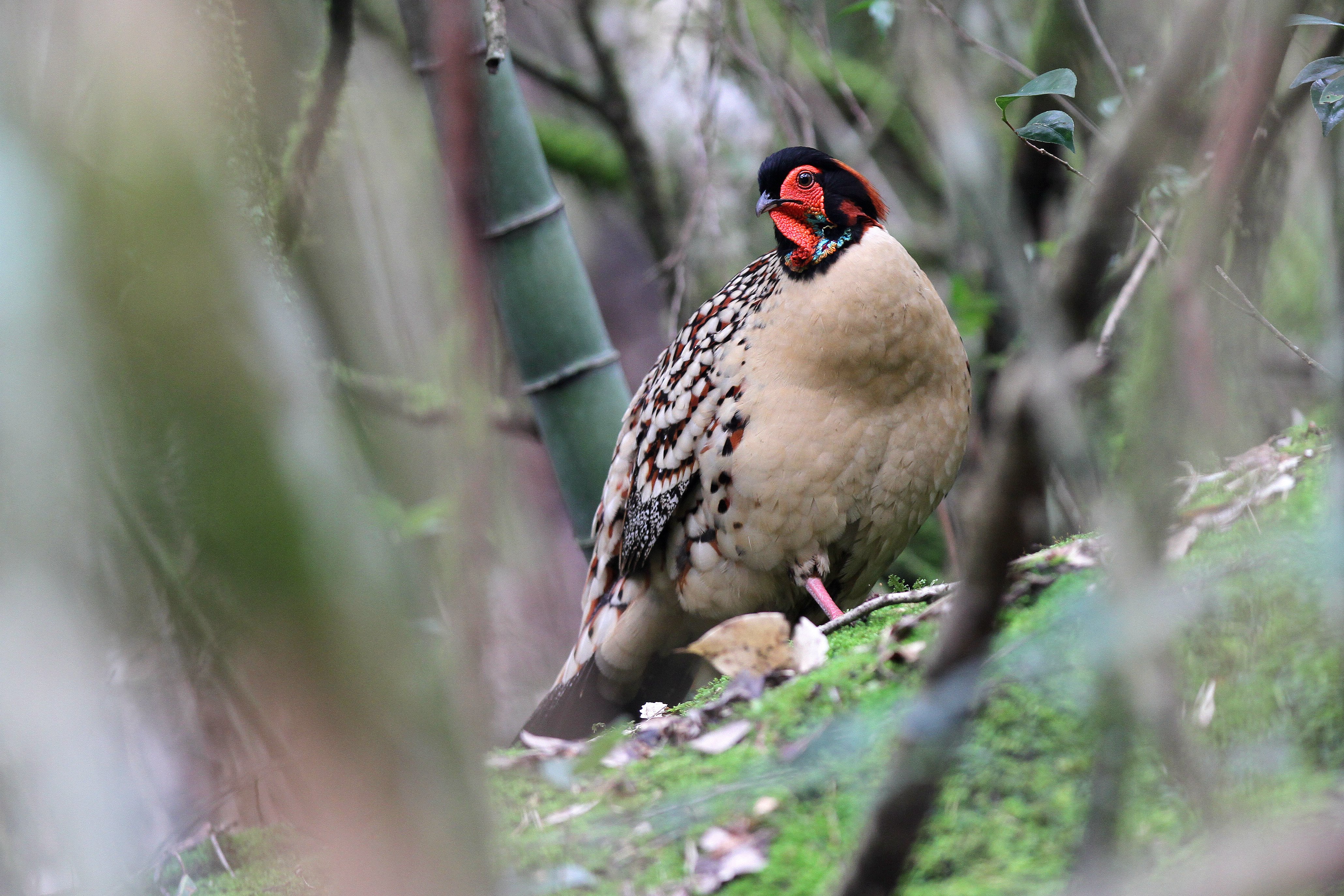
WHAT TO EXPECT
A 16-day, small group early winter birdwatching tour to the provinces of Jiangsu, Jiangxi and Fujian in southeast China. Beginning in the megalopolis of Shanghai, we head north into Jiangsu to bird along the coast at Dongtai and Yancheng, before returning to Shanghai and taking the ‘Bullet Train’ west to Nanchang, in Jiangxi Province. The immense freshwater lake of Poyang is our focus for two days, before we enjoy a complete change of scenery, heading east to Wuyuan, a region has been described as the ‘most beautiful countryside in China’. The birding concludes in Fujian Province, where we search for pheasants on Emei Feng mountain and explore Fuzhou’s forested hills.
We do not reach any great altitude on this tour with most of our birding at below 250m.
Daylight hours: In mid-November, the sun rises in Shanghai just before 6:30am and sets around 5:00pm, so we will want to make best possible use of the daylight hours.
Early morning is by far the most productive time for bird activity, especially for the pheasants, so be prepared for early starts, leaving the hotel on some days before it gets light, between 05:30am and 06:15am so we are ‘on station’ by daybreak, when the pheasants are most likely to be seen out in the open.
We will have a mix of mainly picnic breakfasts, provided by our ground agent, and some sit-down breakfasts, according to the itinerary for the day.
We walk at a sedate pace whilst birding, keeping as quiet as we can.
Please note: the wearing of muted colours will help us to get closer to the wary pheasants if they come out onto the roads.
This is an early winter tour, so expect the weather to be cold. Generally temperatures will vary, ranging from 2-10°C (35-50F), but at Fuzhou in the south it can reach up to 20°C (68F). At night, temperatures may fall below freezing, so early morning temperatures can feel very cold.
At the coast and at Poyang, where the landscape is very open, it can often be windy, which coupled with low early morning temperatures can make it feel very cold at times. Expect both sunny and rainy days in November, with the possibility of some early morning mist and fog near the coast and at Poyang Lake.
BIRDS
220-250 species
ACCOMMODATION
14 nights accommodation in China. The standard of hotels in this infrequently visited corner of China is varied, ranging from good (or best available) Western-style hotels of reasonable standard (approximately three-stars) to several of good four-star standard. All rooms are clean and equipped with Western-style toilets and showers (and not the traditional Oriental-style toilets). Please note, however, that at some hotels the hot water supply can be intermittent.
Our hotels at Yancheng (2 nights), Wucheng (3 nights), Fuzhou (1 night) and near Shanghai International Airport (1 night) are rated as being of 4-star standard. Those we use at Dongtai (2 night), Poyang Lake (3 nights, best available), Wuyuan (2 nights) are considered 3-stars. All have private facilities with western-style toilets.
Laundry services are usually available at one or two of the hotels on this tour, but can be slow and erratic. Since it may not always be easy to get clothes laundered on this tour bringing travel soap with you is a good idea.
Wifi Most hotels do have internet access in the lobby and/or rooms, but due to various reasons, the internet service is occasionally taken down, whilst some services are blocked in China (these include all Google services including Gmail, Facebook, YouTube etc).
MEALS
All main meals are included in the tour price commencing with lunch following our arrival in China on Day 2 and concluding with breakfast on Day 15.
Western food is likely only be available at our hotel in Shanghai. Meals elsewhere on this tour will be Chinese food. Chinese cuisine is tasty, widely appreciated and usually plentiful. The Chinese way of eating is to share a selection of dishes.
Please note that restaurants are unlikely to provide knives and forks with meals with chopsticks provided instead. If you are unused to using these, you may wish to bring your own cutlery (knife, fork and spoon) with you. Green tea will be served with the food.
On longer days, particularly when we are travelling, our leaders will do all they can to make sure the group eats at a reasonable time. However, occasionally early or late lunches and/or evening meals cannot be avoided.
For participants who need to eat at specific times, we suggest you bring along some supplemental food to help. Some snacks will be provided by the agent, but you may also wish to carry your own 'trail food'.
We will have few hotel breakfasts on this tour opting instead to have picnic breakfasts in the field. These typically consist of items such as muesli, instant noodles, biscuits, chocolate, fruit, peanuts and bread and jam (where bread is available). Lunches however, will usually be taken at local restaurants.
Hot water is available in hotels and restaurants. We are advised that most hotel rooms are equipped with a kettle so you may like to bring your own tea bags, instant coffee or drinking chocolate plus powdered milk and sugar. Cups are rarely provided so a travel mug or 'flat pack' mug is recommended for this tour.
WALKING
None of our walking on this tour will be especially strenuous. On the coast and at Poyang Lake, we will be walking on level ground but may well be spending a fair amount of time standing as we scan for cranes, wildfowl etc.
Inevitably when walking in the hills, there may be some steeper sections along the roads and tracks. These are usually quite short and, wherever possible, we will aim to drive uphill and bird as we walk back down again.
Comfortable, lightweight waterproof walking shoes or boots with stout soles and good grip are recommended. Walking poles or seat sticks can often be a good idea on slopes and for resting while birding.
Ground Transport By small coach with local driver. On Day 6, we will travel inland on the high-speed ‘bullet train’ from Shanghai to Nanchang.
Tour Gallery
View a gallery of images for this tour below, click on an image to view as full size with caption
